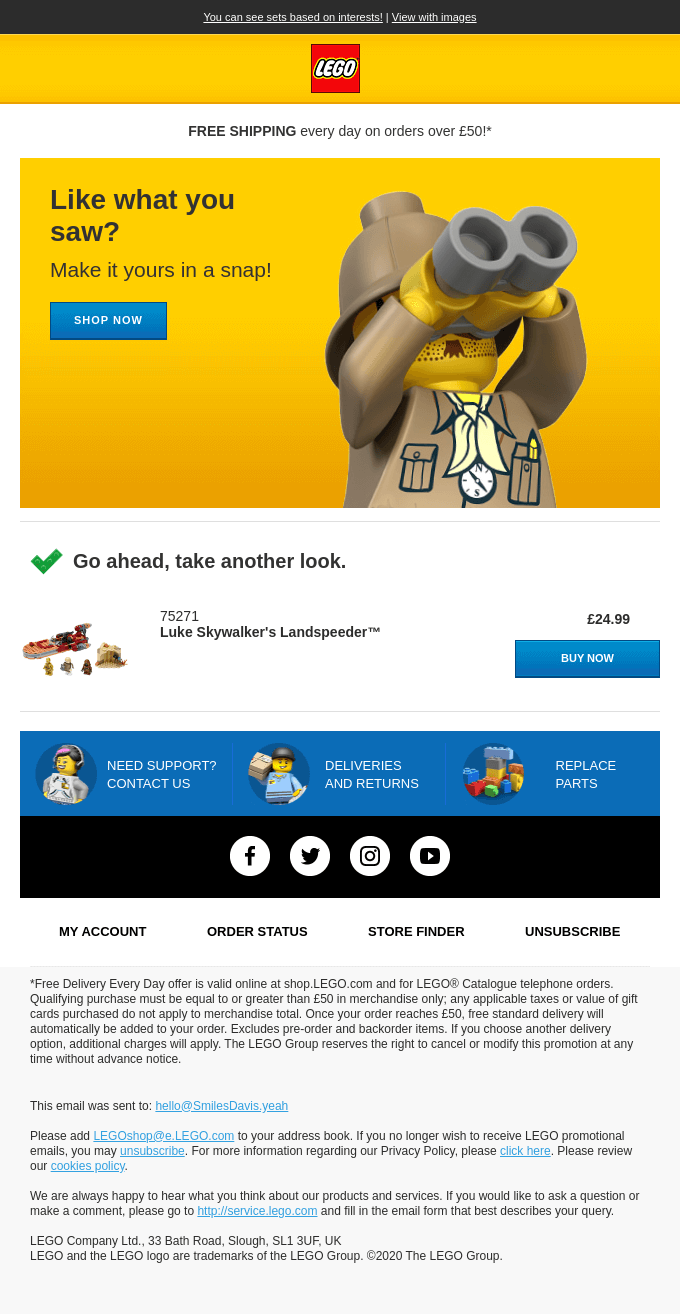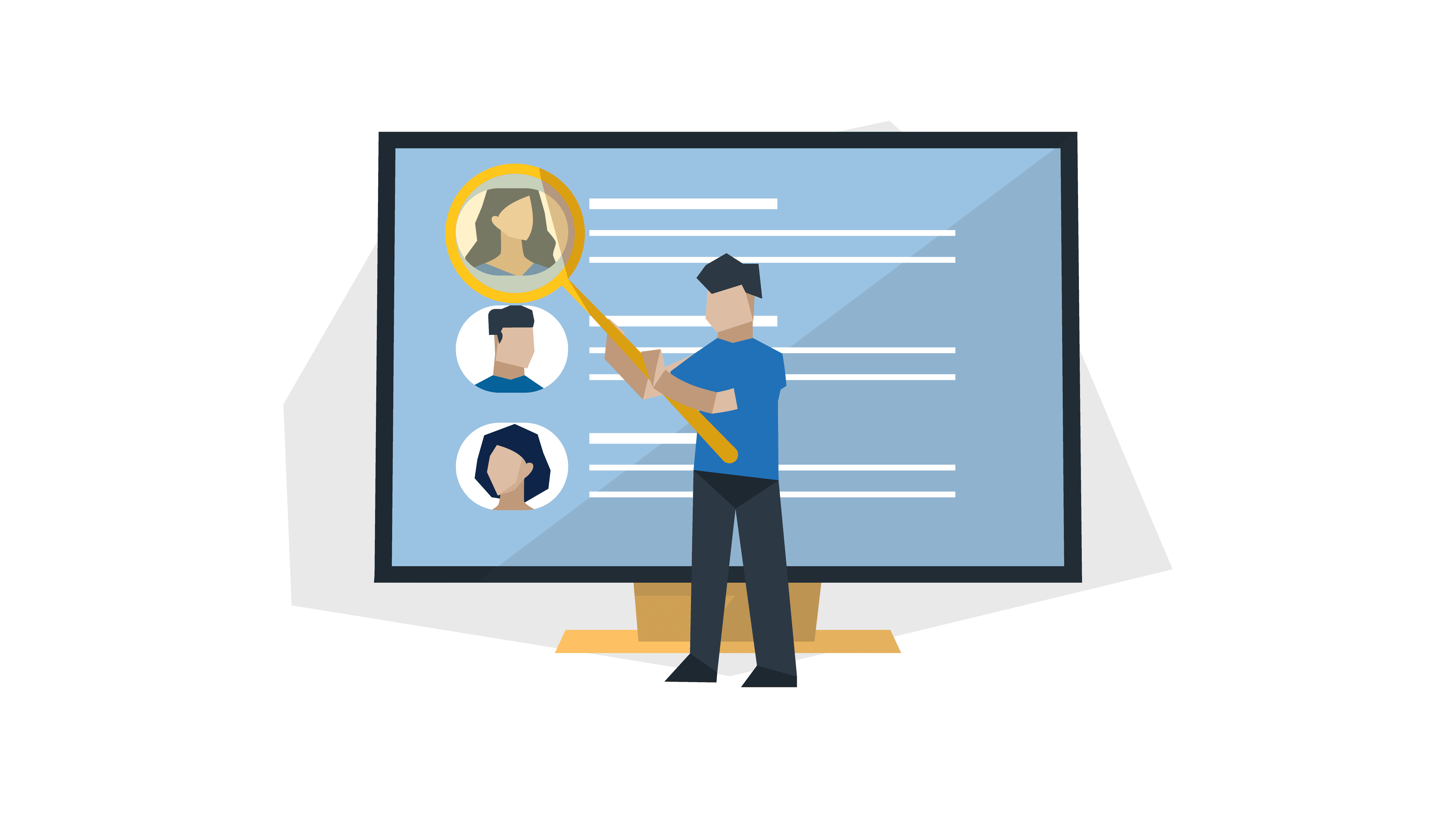
Tag: subscribepage
First-Party Customer Data: Gaining Customer Insights Without Relying on Third-Party Data

For years, brands have relied on cookies to track website visitors, improve the online experience for users, and collect data that aids ad targeting. Cookies also enabled businesses to learn what customers were up to online when not on their website. This practice chugged along until Google announced its plan to phase out third-party cookies on Chrome browsers by 2022. Now in 2024, nearly all web browsers, Google included, have stopped using third-party cookies for retargeting.
Privacy has long been a hot topic globally as new regulations and laws crop up limiting the use of third-party data and the sharing of consumer information. Although many marketers initially balked at this loss, the reality is that zero-, first-party customer data, and second-party data reveal more valuable insights than third-party ever could. The former two are also known as customer-first data, as they’re information a consumer has shared directly with your business either outright or through the way they interact with your brand. Second-party data, meanwhile, is one step removed from customer-first data but is still an important avenue to know about.
Read on to learn more about the different types of data about how you can collect more valuable information from your consumers while respecting their privacy.
What is third-party data?
Third-party data is information companies collect without having a direct relationship with a consumer. It’s always readily available, and its breadth and scope are typically greater than what you can collect in-house or directly from the customer. Third-party data is often purchased or obtained from external sources or websites and can include demographic information, buying signals, and more.
Although it’s becoming harder and harder to access, the good news is third-party data isn’t the totality of consumer information. You can instead acquire and use zero-, first-party customer data-, and second-party data to supercharge your advertising.
Zero-party customer data
Zero-party data is an incredibly powerful tool for brands to leverage. As previously mentioned, it’s information a customer has knowingly shared with you, like purchase intentions, personal context, and how they want the brand to recognize them.
Fatemeh Khatibloo, a former VP principal analyst at Forrester, notes zero-party “is gold” and that, “When a customer trusts a brand enough to provide this really meaningful data, it means that the brand doesn’t have to go off and infer what the customer wants or what their intentions are.”
Many companies rely on surveys and questionnaires to capture information directly from buyers. If you don’t want to burden a customer new to your page though, simply ask what brought them to your website. Are they looking for a gift? Shopping for themselves? Whatever you ask, keep it short and sweet.
First-party customer data
First-party customer data refers to information collected directly from a business’s customers or website visitors. It’s obtained through various channels, such as website analytics, consumer surveys, purchase history, and social media engagement. Unlike second- and third-party data, which are collected from external sources, first-party customer data is unique to a business and provides a deeper understanding of customer behaviors and preferences.
Examples include analytics like pageviews, bounce rate, and conversion rate; demographic information, purchase history, product preferences, and other customer data; and social media engagement metrics, such as likes, shares, and comments.
First-party customer data is the most valuable kind for personalization because it’s taken from a consumer’s site-wide, in-app, and on-page behavior. However, it’s not always readily available. Collecting and analyzing this information requires a strategy and tools to ensure it’s accurate, relevant, and actionable.
Second-party customer data
For the sake of providing all relevant information, let’s go over second-party data (not considered customer-first data). Essentially, it’s someone else’s first-party customer data that you’ve purchased or otherwise obtained. The other organization or brand gathers it firsthand from their audience, which can include activity on websites, apps, social media, in-store purchase history, survey responses, etc.
To access second-party data, you must have direct interaction with the organization that initially collected it. For example, if you’re an independent merchant who makes your own products and hosts them on another eCommerce platform (e.g., selling through another merchant’s store), you could purchase customer data from your selling partners, and vice versa.
A second-party data arrangement gives you more flexibility in the transaction and ensures you receive high-quality information that allows you to build business relationships while simultaneously expanding your audience. You may also be able to negotiate to have your partner gather additional zero- and first-party customer data, which can drive your marketing efforts and be exchanged within HIPAA, FCRA, FERPA, GLBA, ECPA, COPPA, VPPA, GDPR, PIPEDA, and other privacy guidelines.
First-party customer data vs. second- and third-party data
The key difference between the three types of data is that first-party customer data is collected directly from a business’s customers or website visitors, while second- and third-party are obtained from external sources. The former type is richer and provides a deeper understanding of one’s customers. The latter two, on the other hand, are more generalized and may not offer the same level of insight into consumer behaviors.
While second- and third-party data can be valuable in certain situations, businesses that rely solely on them risk missing critical information about their customer base. First party customer data is a must to gather the data necessary to appeal to and convert your target audience.
The importance of first-party customer data in eCommerce
First-party customer data is becoming increasingly important for eCommerce businesses because it provides a wealth of valuable information on consumers. Here are some ways to leverage that data to boost your eCommerce business:
- Personalize the customer experience: First-party data uncovers the details of your buyers’ preferences, purchase history, and behavior on their website. With that information, you can craft personalized experiences for customers, such as recommending products based on their past buys or showing them targeted advertisements.
- Develop effective marketing strategies: By analyzing consumer behavior and preferences, you can identify the most effective channels and messages to reach your target audience.
- Increase customer loyalty and retention: With first-party data, you can engage more with shoppers and provide relevant content, which contributes to increased loyalty and retention.
9 Ways to gather first-party customer data
Now, you need to decide how to begin gathering information for your business. To collect first-party customer data, use cookies and tracking pixels and leverage appropriate tools. Then, review customer behaviors to help you analyze the accumulated information.
Throughout this process, you must also abide by data privacy laws and maintain top-notch security to prevent breaches; your consumers should feel confident you’ll protect their information. Luckily, there are many solutions and strategies available to collect and synthesize first-party data effectively and securely.
1) Ask for feedback
The easiest way to acquire information is simply to ask for it. You can request feedback directly from your customers to learn what they’re interested in, what they like and dislike, and how they use your products. This straightforward capture method can reap actionable insights for your business.
We suggest framing your ask to showcase how providing feedback will benefit your buyers. For example, you might send a survey that says, “Your answers will help us prioritize releasing new products that you’ll love.” Or, you could write in an email, “We read every response to fine-tune the deals and discounts we send you.”
2) Use session monitoring tools
A large part of first-party customer data is understanding customer behavior on your owned channels. To capture this information, session monitoring tools are key. Session monitoring shows you how your customers interact with your channels from their perspective so you understand how each channel performs.
These tools can reveal important information about a user’s scrolling, clicks, and time spent on page, giving you insights into their buyer journey. You can use that information to retarget those customers later (for example, if they spent time on a particular product page scrolling and clicking on content, but didn’t buy). They also help you understand where and why customers drop off their journey. This enables you to optimize your pages and improve the flow of your customer journey.
3) Leverage content marketing and newsletters
Content marketing strategies are a win-win for eCommerce brands. A great way to learn what kind of content to serve your customers is to ask for their newsletter preferences. When users opt into your newsletter or other marketing activities, you instantly gain access to important information about them. For instance, you could ask for a checklist of what content they most want to receive before signing up, or you might list the different newsletters you offer and let them choose which list they should join.
In addition to delivering more personalized content, you’ll understand whether a shopper is interested in children’s clothing, men’s or women’s outfits, outdoor gear, etc., to further tailor your communications. Similarly, you can glean insights from your newsletter open-rates and click-through rates (CTR) to discover their interests and hobbies.
4) Incorporate pop-ups, surveys, and quizzes
Surveys and quizzes are fantastic methods of capturing zero-party data. For instance, a pop-up on your home page could ask what kind of products your customer is looking for. Based on their response, you can then recommend product pages instantly to deliver a personalized and optimized shopping experience.
Or, dropping a fun quiz as shoppers browse can help them discover the right products for their preferences. For example, the makeup brand Il Makiage offers customers a quiz to find their “perfect match” for makeup. Once they learn their right shade, the brand recommends other products that complement both the shade and the product type as part of an upsell/cross-sell strategy.
Using pop-ups or quizzes early in the customer journey offers you a two-fold benefit: First, it can boost engagement and conversion rates, which drive up your revenue. Second, it delivers valuable data to further optimize your website, improve the customer experience, and target your customers more effectively.
You can also capitalize on your order confirmation page to invite buyers to participate in a survey and share their preferences and feedback. An incentive to fill this out could be a 10% discount off their next purchase, or instant access to a new release. Seeking feedback at the end of a customer’s journey, whether at the checkout confirmation stage or via email after the purchase is complete, helps your brand as well: Beyond collecting more data about your customer, it demonstrates to them that you care about their feedback and thus breeds customer loyalty.
5) Loyalty or rewards programs in new customer onboarding
When a new customer onboards, inviting them to your rewards and/or loyalty program is a ripe opportunity to collect valuable data about them, such as their shopping habits, preferences, and interests. These programs can run the gamut from points per dollar spent to insider information and early access to new products.
Whatever you choose, the information your customers share during the onboarding process helps you target them with content they’ll find relevant and exciting.
6) Watch for cart abandonment trends
Your cart abandonment trends deliver important information about your customers and buying experience. They reveal thresholds concerning shopper tolerance for fees and help you uncover their behaviors.
For example, some consumers add items to their carts and then abandon them because online shopping is a habit or way to kill time — they have no intention of checking out and completing a purchase.
With this data, you can hone in on who your audience is, what they’re interested in, and thus reduce your cart abandonment rates.
7) Utilize NPS
Net Promoter Score (NPS) is a customer loyalty and satisfaction measurement derived from asking buyers how likely they are to recommend a product or service to others. It operates on a scale of 0-10. From this score, you can determine which people are detractors, passives, and promoters, essentially showing you who your biggest fans are and who you need to work on:
- Detractors: Customers who rate your product or brand from 0-6. This means they’re unlikely to recommend your brand or product to others and probably won’t stick around for a repeat purchase. Worse, they may even discourage potential buyers.
- Passives: Customers who rate your product or brand a 7 or 8. These individuals don’t actively recommend your brand but are also unlikely to damage it. Passives are very close to becoming promoters and can be won over, so this is a space you should investigate and see what it takes to convince them.
- Promoters: Customers who rate your brand and products a 9 or 10. These enthusiastic and loyal followers act as brand ambassadors to enhance your brand’s traction, increase referrals, and make repeat purchases.
Capture NPS via website surveys, in-app questionnaires, or email newsletters and use those scores to target and retarget customers. For example, if you have happy buyers, you might want to invite them to leave a review or join your referral program.
8) Leverage customer service integrations
Customer support is one of the few places where buyers voluntarily supply information to your company. You can analyze the wording in the tickets you receive to watch for trends, then segment your customers based on the type of tickets they submit. For example, if someone sends in a question about auto-replenishment and they aren’t a customer yet, you can mark them as interested in the program and potentially open to more information about it.
Further, many shoppers value additional support during their online experience. Making customer service easily accessible can help you identify needs more quickly so you can take action and customize the shopping experience for people in real-time (or close to it). Customer service integrations like live chat capture real-time information about a consumer’s experience and journey for your records.
9) Analyze your CRM for insights
Your CRM is full of actionable insights to improve your customer outreach and marketing efforts. For instance, depending on the type of information you capture and store, it can segment your buyers by characteristics like profession, title, family data, the number of times they’ve visited your site, newsletter preferences, and more.
That data can then inform your future ad campaigns and marketing efforts. For example, you could display infant products to customers who’ve browsed items for newborns and include baby content in their newsletters, or give incentives to shoppers who visit often and fill carts but don’t purchase so they’ll head to checkout.
Tools for collecting and analyzing first-party customer data
Cookies and tracking pixels act as the backbone of first-party customer data collection. Cookies are small files stored on a user’s device that allow websites to remember user preferences and behavior. Tracking pixels, meanwhile, are small images that enable businesses to monitor user behavior on their website. By combining cookies and tracking pixels, businesses can accumulate useful information on user behavior, including pageviews, time spent on the website, and products viewed.
That means you’ll have to set up technology on your website. However, you’ll want to use direct tools as well like:
- Website analytics tools, such as Google Analytics, which provide insights into user behavior on the website.
- CRM tools like Salesforce, which allow businesses to manage customer information, including demographics, purchase history, and website behavior.
- Marketing automation tools, such as HubSpot, to create targeted marketing campaigns based on consumer behavior and preferences.
Tip: Gather customer feedback regularly to gauge how your brand is doing in the eyes of consumers.
Best practices for first-party customer data gathering
When collecting customer-first data, it’s important to have a strategy in place and ensure your data storage and governance are on point to prevent issues with regulatory compliance and privacy. Along with those two pillars, we’ve listed some of key practices to follow to best leverage that information without running into legal trouble.
Combine customer behavior
Customer behavior encompasses your consumers’ demographics, preferences, and actions on your website. That information provides context for your analysis and supports your findings. You can learn about buyer behaviors through various channels, including website analytics, customer surveys, and purchase history. You’ll have a great deal of input to work with, so make sure you use tools to combine data to help you make the most of it.
Ensure data privacy and security
Collecting and analyzing first-party data comes with the responsibility of ensuring privacy and security. Companies must be transparent about the information they collect and how they use it, as well as store it securely and protect it from unauthorized access. In that regard, businesses need to comply with data protection regulations like GDPR and CCPA.
Often, if you use a cloud stack such as Azure, your technology will come with the appropriate security requirements. However, you’ll want to verify storage, security settings, and compliance with privacy regulation (e.g., separation of data, cleaning information so it can’t be tied back to a specific person).
Many regions also require you to disclose what information you hold on a customer when they ask, and you may also have to destroy it at a moment’s notice if they or an authoritative body demands it. This means you’ll want to clean most data of identifying details.
Use analytics and data management
Too much data can be as bad as a lack of it. Without tools and guidance in place to manage that information, it can quickly become overwhelming and useless. Make sure you develop a strategy to help you make use of any data you collect. That also means establishing policies to:
- Outline which data you collect and why
- Identify which tools you use to process data
- Highlight the goals of first-party data collection
- Introduce AI or analytics to gain insights from data
Once you’ve crafted a first-party data strategy, you then have to make sure it continues to meet both your needs and technology. Set a schedule to update your policy as your business, technology, and goals change.
Wrapping up — Leverage first-party customer data to remove reliance on third-party data
Customer insights are critical for any business to retain their consumer base and make smarter decisions. As third-party data becomes more difficult to gather and shoppers demand more in the way of both privacy and personalization, eCommerce professionals need to be strategic about sourcing the right audience information.
At first glance, it may seem like the loss of third-party data is a major blow to your business. In reality, though, it’s opened the opportunity for you to lean into zero-, first-party customer data, and even second-party data sources to uncover actionable insights that deliver more value and drive your business forward faster. The more direct information you receive, the more relevant and valuable the data is to your business.
Published: Mar 29, 2022
Updated: July 16, 2024
Amazon 1P vs 3P: Benefits of Each and Why to Move From 1P to 3P

For many brands and manufacturers, selling on Amazon is a no-brainer. However, even on a single platform like Amazon, you still have to make choices. Do you sell Amazon 1P or 3P? And what do those decisions mean for your business and its margins?
Choosing to handle everything 1P in single, seamless transactions with Amazon.com can be tempting. But, for many, delivering products directly to the consumer with 3P sales offers greater freedom, can be more profitable, and lays the groundwork for diversifying into other marketplaces.
Amazon 1P vs 3P is therefore a question of logistics, infrastructure, and processes. Deciding between selling on Vendor Central (1P) or Seller Central (3P) depends on how involved you want to be, how you set up your logistics, and what infrastructure you establish.
What is 1P?
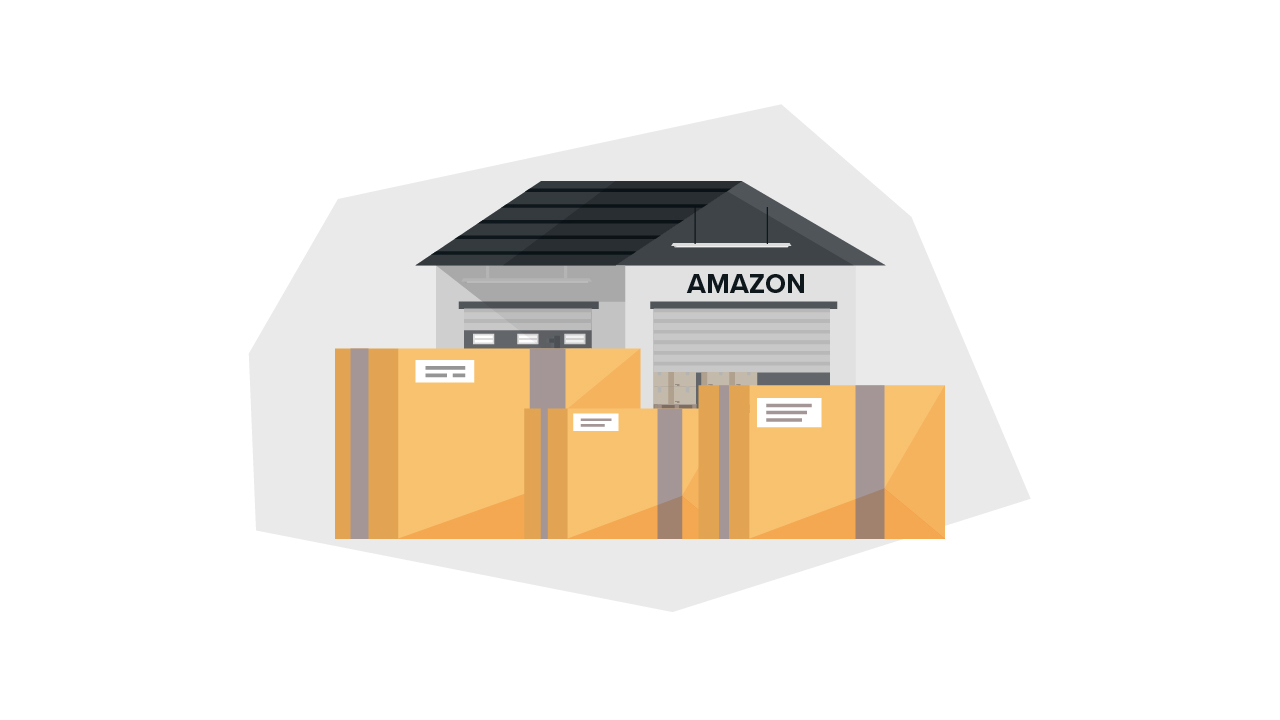
1P is often considered the easiest and fastest way to sell on marketplaces like Amazon or Walmart.com. It’s also the most traditional.
However, you’ll need an invite to do so. Once Amazon sends you an invite to Vendor Central, you can join. Then, the company will send you a purchase order and you fulfill it. Here, Amazon is your direct customer.
Rather than creating listings on Amazon, you sell directly to the company. Amazon negotiates a wholesale price for your goods, picks them up, and lists them for you. They then set the pricing, control the listings, and decide whether or not to make another purchase and when.
The only control you’ll have is via Vendor Central, where you can check on purchase orders, find and add product information, see merchandising, see reports, and see payment information.
The benefits of selling 1P
1P has several surface benefits for manufacturers:
- It’s hands-off, meaning you don’t have to deal with logistics or distribution.
- You don’t have to handle direct-to-consumer marketing, sales, or customer service.
- You don’t have to worry about packaging, warehousing, etc., other than in your own existing system.
- You’ll have Amazon’s team to merchandise and advertise your products, which can greatly increase sales
- Amazon handles marketing, promotion, and slotting.
- You can sell in bulk since marketplaces will purchase large orders.
- Income is predictable, because Amazon normally tries to establish a cadence of repeat orders.
- Costs are predictable because you’ll pay a flat fee with no additional fees for fulfillment and referrals.
- Every product is listed as “Ships from and sold by Amazon.com” which can improve customer trust and improve direct sales.
Drawbacks of selling 1P
Unfortunately, selling 1P also means:
- Amazon buys at wholesale pricing, often at lower negotiated rates. You can expect a 20%–30% reduction over retail pricing at a minimum.
- Conditions are restrictive, and pricing on Amazon might limit your ability to sell on other marketplaces. For example, if Amazon is selling products cheaper than Walmart.com, you might not be able to sell on Walmart.com.
- You have no control over pricing, the listing, or photos on Amazon. For example, Amazon will negotiate a minimum advertised price (MAP) with you. But, they can still sell products for less than this if another reseller, authorized or not, uses a lower price because Amazon’s price-matching clause trumps the MAP clause. Once pricing is determined under MAP, it’s difficult to raise it.
- You have no control over logistics, so fast-moving products might frequently sell out without being reordered in a timely manner. This costs you considerable revenue because it means fewer products are sold.
- No matter how popular your products are, you won’t be building trust for your brand, only your products.
- Amazon typically charges a 4%–10% fee to cover marketing costs, a 2% fee for freight allowance, and other costs. These can fluctuate, and Amazon will renegotiate over time, often at your expense. Amazon withholds the right to charge additional fees for advertising, merchandising, and chargebacks, so you might also see less than your negotiated profit margin.
- You become completely reliant on Amazon for sales and having a presence on Amazon.
- Amazon can take 30, 60, or 90 days to pay.
1P works well for manufacturers that want nothing to do with direct-to-consumer sales. However, 3P is increasingly attractive to many, especially with outsourced fulfillment partners and Amazon’s own FBA service.
What is 3P?
3P selling is selling directly to the customer via the marketplace. Here, you take on the role of retailer, merchandiser, and advertiser.
3P involves taking your goods to Seller Central and listing them directly for consumers to buy. That means taking over creating product pages, talking to consumers, providing customer service, and more. You’ll also directly set pricing, monitor inventory levels, and you’ll take on full responsibility for fulfillment and customer service. You get all of the profit margin but also all of the responsibility.
While you can earn more, you also have to create infrastructure to handle logistics. 3P marketplaces are extremely large, and today’s manufacturers often sell directly. Brands like Anker, which sold almost exclusively on Amazon.com until 2017, are prime examples of this model’s success. And marketplaces like AliExpress are entirely built around manufacturers making direct-to-consumer sales.
Here, you’ll also have to choose between different fulfillment strategies. For example, you can choose Fulfillment by Amazon (FBA) meaning you hand fulfillment over to Amazon anyway and pay for storage and delivery, Fulfillment by Merchant (FBM), meaning you take on fulfillment entirely, and Seller Fulfilled Prime, meaning you commit to Amazon’s strict fulfillment requirements to earn the “Prime” label and all its advantages.
The big issue at stake here is that you maintain control of retail prices, inventory levels, and profit margins. That means you set pricing, consistently, across every platform you have a brand on. You also work towards building a brand as a distributor, instead of “just” a product.
The benefits of selling 3P
3P sales have much to offer manufacturers:
- Direct retail sales for a maximum profit per product, with no middleman.
- Freedom to expand to other channels, such as Walmart.com, without risk of being delisted due to pricing discrepancies.
- Full control over product presentation and branding, including which products are highlighted and marketed.
- More control over inventory and what stays in stock. You won’t miss sales because products are sold out. As long as you stay on top of inventory, you can keep sales up.
- Direct control over advertising, sales, and price-matching
- Control over retail prices, with no MAP with Amazon that could reduce listed sale value.
- Access to brand protection and product launch capabilities
- Full control over product images, product detail pages, and other merchandising, so, you can update listings on the fly instead of waiting for approval from Amazon. E.g., if your product has changed.
- You sell products at retail rather than wholesale prices.
Drawbacks of selling 3P
Conversely, 3P requires a significantly more hands-on approach, which is why many brands have avoided direct sales. Some of the challenges of 3P include:
- You’ll need a significant amount of infrastructure no matter what fulfillment method you choose.
- You’ll have to meet order demands, including packing, shipping, and fulfilling orders in a timely manner. This means adhering to marketplace requirements, providing a satisfactory customer experience, and gathering positive customer reviews on the platform.
- You’re responsible for any merchandising and advertising and that means paying the fees for sponsored products and other ads. You’ll take on full advertising costs yourself and those costs are not always predictable.
- Prepping and shipping items can bring further costs. For example, seasonal sales are difficult to prepare for; meeting two-day shipping requirements across the globe requires extensive logistics. Additionally, Amazon FBA has strict packaging and inspection requirements you’ll have to follow.
- You’ll still have to pay Amazon fees. Amazon seller fees average 8%–20% but are normally fixed per category. Charges will be predictable. If you sell with FBA, you’ll also have to consider warehousing and storage fees, placement fees, etc. Amazon also won’t cover any advertising fees. You may also be responsible for referral fees.
- You have to run and manage your own customer service, which means you need extra infrastructure in place, unless you solely rely on FBA.
- You’ll have to invest more into brand reputation management, as feedback will go directly to your seller account.
Essentially, moving to Seller Central from Vendor Central brings new costs and challenges. It’s important to consider both and assess how you intend to mitigate logistical issues, such as with Amazon FBA or another fulfillment-as-a-service solution.
Of course, FBA and third-party logistics (3PL) have their own associated fees, which you can calculate as part of your margins. For most, they’re cheaper and easier than building your own warehousing networks, delivery infrastructure, and packing plants – but that also depends on your volume of sales and existing network.
How does Amazon 1P vs 3P compare?
Choosing between Amazon 1P vs 3P largely depends on your organization and how involved you’re willing to be. 3P sellers have to deal with considerably more in terms of logistics, customer service, and direct marketing. This can add complexity and require greater business investment, even if it results in larger profits in the long term.
Time vs. money
Selling 3P increases the time expenditure per sale, but also increases profit per sale. Conversely, 1P greatly reduces hassle, but can significantly cut into margins.
Even if you sell through a 3PL like Amazon FBA (which you probably should be), you’ll still have to invest significant resources into building infrastructure to prep and ready packages for FBA. If you’re not careful or manage those investments poorly, Seller Central won’t save you anything over Vendor Central. Outsourcing infrastructure to 3PL centers or services that have the resources to scale fulfillment to reduce costs can be more cost-effective than keeping everything in-house.
Tip: Sellers can use the nationwide MyFBAPrep network to handle all prep work, including bundling, kitting, labeling, and more.
Freedom to diversify
1P sellers may find themselves bound to a single marketplace, because you risk being delisted elsewhere if you’re selling for a lower price on Amazon (or another site). Selling 3P, meanwhile, means you control pricing and avoid being delisted (for example, if Amazon notices you’re selling the same product on Walmart at a cheaper price).
Diversifying across marketplaces offers greater business security, because if issues arise on one account or marketplace, you’re still secure in other sales channels. Furthermore, diversifying across different marketplaces across the globe offers even more opportunity for growth and security for your eCommerce brand.
If you sell to Amazon, they can control what you do with the product. If you sell to Amazon and other wholesalers, you may find the price of your product dramatically drops, because Amazon’s price-match policy means they can go under your MAP.
Control over brand
If you sell directly to Amazon, you normally can provide product descriptions, marketing material, etc., up front. From there, it’s in Amazon’s hands. They’ll still charge you for merchandising, and you’ll have no control over product presentation, listing updates, or other alterations, even as your products change.
On the other hand, selling 3P means you have to handle all of this, which requires investing in merchandising, creating listings, and keeping everything up to date.
You’ll also be able to control your policies around social and ecological issues, your return policies, your packaging policies, etc. That’s even true if you’re shipping with FBA, as you can use Ships in Product Packaging (SIPP) to ensure you can directly fulfill products in your boxes rather than Amazon’s.
Amazon 1P vs 3P which is right for your brand?
The largest consideration for brands considering Amazon 1P vs 3P sales is control. For many, Vendor Central offers an easy way to move goods to market with as little hands-on activity as possible. At the same time, that could limit control of your brand, reduce potential profit margins, and deny you the same opportunities to build an eCommerce brand and potentially diversify into other marketplaces.
Therefore, it’s valid to consider 3P as an option, provided you can set up the infrastructure you need. However, if you lack existing capital to create a merchandising campaign, you may want to rely on Vendor Central or an Amazon Brand Launch campaign to get started. You can always move from Vendor Central to Seller Central. However, if you can start with Seller Central right away, you have much more opportunity to build a brand around your products from the start:
- Find a 3PL to handle fulfillment and FBA prep for you. A service like MyFBAPrep can handle the intricacies of packaging and labeling to meet Amazon standards, so you don’t run the risk of early fines and account issues.
- Leverage FBA to ensure fulfillment and lead times are on-point, especially as you’re just getting started and learning. FBA takes customer service, returns, and warehousing off your hands, meaning you have to figure out inventory flow, FBA prep, and merchandising. That’s still less hands on than doing everything yourself and will mean better customer reviews even while you’re still working out the kinks in manufacturing and logistics.
- Adopt inventory management software with a good SKU system and analytics so you can avoid costly stock interruptions. In addition, maintaining stock in the early days of your FBA account will ensure you maximize your total FBA restock limits once they kick in.
One of the largest challenges of moving to 3P is taking on operational work. Today, you can often simply outsource that. You’ll still need an in-house overview of inventory throughput, sales volumes, and forecasting. However, much of that can be handled with good software, which you can validate manually. You’ll also need extras like customer service and support, although you can also sidestep most of that by opting to ship with FBA rather than doing your own fulfillment.
Many manufacturers avoid 3P sales because it requires having infrastructure in place. However, you don’t need to warehouse and distribute products yourself. A 3PL like MyFBAPrep offers over 100 warehouses and over 85 million square feet of warehouse space globally, plus economies of scale to reduce cost of fulfillment even for smaller brands.
So, for example, you could sell 3P by shipping from manufacturing to MyFBAPrep. Here, MyFBAPrep can break your pallets down, correctly package and label everything for FBA, and then send shipments to FBA. When a customer places an order, Amazon handles the pick and pack and delivery, as well as any customer service and reverse logistics. All you have to worry about is keeping inventory in FBA.
What about hybrid 1P & 3P models?
There are plenty of selling models you can consider on Amazon, including a combination of 1P and 3P. Here, the vast majority of your inventory will sell directly to Amazon. Then, when Amazon goes out of stock, you have excess inventory, etc., you can directly sell your products to consumers, leveraging a 3PL for actual fulfillment and delivery.
This model still has many of the disadvantages of 1P selling but does mean you can largely leave sales in Amazon’s hands while working to avoid stock-outs and lost profit.
How to move from 1P to 3P on Amazon
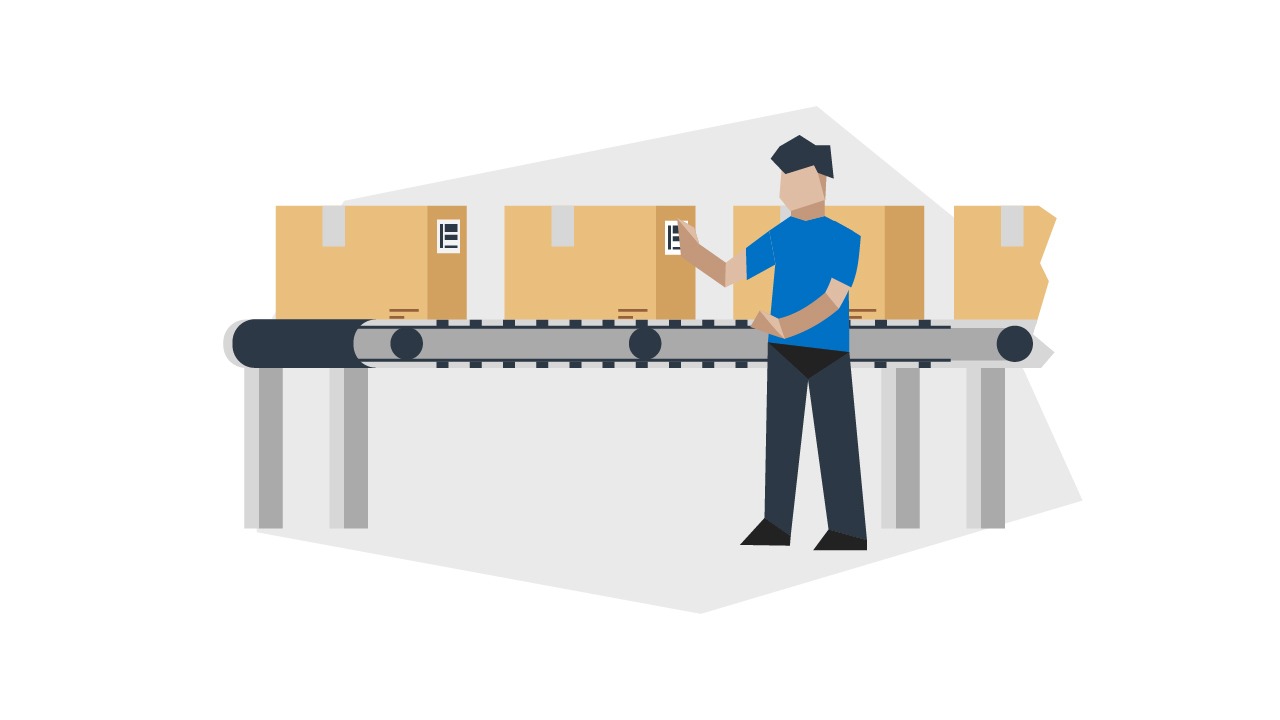
For many brands and manufacturers, 3P sales provide more profit, especially with the use of 3PL solutions. Therefore, 3P Seller Central is the clear choice, if you can manage the infrastructure.
Craft listings
Plan listings and launch them. This should involve investing in high-quality merchandising (photos, descriptions, Amazon Vine reviews, etc.). The higher quality your listings, the more likely they are to make sales.
Invest in marketing
Performing Amazon keyword research, SEO, and creating a marketing budget for PPC will help to drive sales. This also helps you work around potential sales dips, in case Amazon stops featuring your products once they no longer sell them directly.
Use FBA
FBA simplifies logistics, giving you access to worldwide distribution without the expense or complexity of building a distribution network. FBA is convenient, affordable, and delivers purchases on platforms like Walmart.com through multi-channel fulfillment. So, when you move to other marketplaces, you won’t necessarily have to choose another fulfillment partner right away (although you may want to).
Selling via FBA is sometimes called 2P selling, because it removes much of the work of 3P selling. However, you’ll still have a lot to keep in mind and a lot of infrastructure to handle before you can sell via FBA.
Partner with a prep center
Partnering with an FBA prep center and FBA means packaging, labeling, inspection, pick and pack, etc., are all taken off your hands. You have the convenience of 1P sales without losing the profit margin to Amazon. It’s still important to assess total costs, but everything will be handled for you while protecting your margins.
Set up eCommerce management
While you can accomplish much of this through Amazon’s Seller Central, it’s important to have software and resources in place to:
- Track total inventory in your warehouse, in FBA, and in any other marketplaces.
- Implement fulfillment tactics like Just-in-Time, where you track sales and keep products in stock across marketplaces.
- Avoid overstock situations, especially at FBA, where poorly moving stock can eat into profit margins.
- Map peak sales periods and have inventory ready to meet demand.
You’ll need software in place to automate and manage this data. However, once you have it, it should be relatively easy to stay on top of reorder points, track how advertising campaigns impact sales, and predict sales so you can adjust inventory levels accordingly. Putting research into inventory management software should be one of your top priorities as you move to 3P.
Establish customer service
While customer service can be as simple as having someone on hand to answer inquiries, you’ll have to ramp it up as sales increase. Maintaining a direct relationship with customers means handling returns, dealing with questions, and resolving complaints in a timely and professional manner. Doing so will produce additional benefits, in that you’ll garner more positive reviews, and eventually make more sales. Initially, you can probably handle that directly through Seller Central. However, it’s important to keep in mind that as you move to new platforms and other marketplaces, you will likely want to
Wrapping up — Grow according to your business needs
3P sales introduce new complexity in terms of overhead, infrastructure, and logistics. While some of this, like listing setup, marketing, and long-term listing management, will likely remain your responsibility, most other aspects including prep, fulfillment, and even customer service can be outsourced, and more affordably than simply selling directly to Amazon.
Which is right for your business? Chances are high that, with the right infrastructure and third-party partnerships, 3P is the best choice for your brand.
If you’re ready to make the switch to selling 3P, get started with FBA by enrolling with MyFBAPrep. We handle every aspect of inspecting, preparing, and packaging your products for Amazon so distribution remains as simple as 1P wholesale.
Published: Jun 22, 2021
Updated: May 16, 2024
How To Use Post-Purchase Surveys to Boost Your eCommerce Brand

eCommerce business owners know one of the challenges of operating a digital-only company is the lack of direct customer interaction. That face-to-face opportunity to ask customers what they think of your product or how they heard about your business is nowhere to be found.
Yet, customer feedback remains critical to understanding the consumer journey and how your product or service performs. Reproducing personalized connections and extracting customer input has become indispensable in the eCommerce landscape.
In this article, we’ll talk about how the post-purchase survey can increase the customer feedback you receive and boost your eCommerce brand.
What are post-purchase surveys?
Anyone who’s shopped online has encountered post-purchase surveys. They’re a series of questions that pop up on a website after you make a purchase, or are delivered to your inbox as a questionnaire two seconds after clicking ‘‘confirm purchase.”
Post-purchase surveys (sometimes called post-scale surveys) are any questions posed to the customer directly after they buy a product or complete a significant action like registering for an event or signing up for a subscription service (even if it’s free).
Obtaining valuable customer feedback is the best way to gain insight into the customer experience and your product or service. It enables you to improve the elements customers already respond positively to and mend any problems uncovered.
Defining a post-purchase survey is relatively straightforward — it’s all there in the title! But how brands use this tool depends on individual goals and needs. Let’s dive into some of the most common uses.
3 Uses for post-purchase surveys
Post-purchase surveys are handy for gaining both qualitative and quantitative customer input. They’re easy to switch up frequently, which means you can play around with questions that tackle multiple touchpoints or hone in on a key area.
Here are some of the top uses for brands today.
1) Understand your marketing attribution and ROI
Let’s say you recently launched a brand awareness advertisement across three social media channels, and you’re curious which one people are using the most to connect with your brand. Sure, you’re already tracking click and conversion rates to see where your traffic is coming from, but those metrics only tell part of the story.
What types of products are the people who convert from LinkedIn gravitating towards versus those who convert from Instagram? What drew them to the purchase action in the first place? Did they see and click an advertisement on Instagram from an influencer, compare prices and other products on Amazon, then finally arrive at your website organically for the purchase stage?
Knowing the route to conversion can inform how you message your product across each social channel going forward. It also gives you a clearer understanding of which channels deserve spend for a higher ROI.
2) Identify barriers and glitches
Did you just change things up on your website? Or maybe you embedded a new feature at checkout? It’s helpful to know if your customer thought navigating the new site was easy and if the purchase process was straightforward.
Maybe they struggled at the search stage: They couldn’t find what they were looking for and gave up. That could point to a need for a keyword search bar (or, if one exists, make it more prominent).
Perhaps when adding items to the cart, the site didn’t allow the buyer to amend the size or change the quantity easily. It could be the customer was asked to repeat information they’d already provided at checkout, making the process more time-consuming (and annoying) than necessary.
Ultimately, a barrier to the customer is a barrier to more money in your pocket.
3) Know what customers think about your brand
Do customers plan to return to your store? Would they recommend your brand to a friend? Do they like getting those daily emails, or do they think your communication is slightly overkill?
Understanding how customers interact with your brand and what they want most from you is crucial to personalizing your communication and messaging to their preferences.
So, what are some common post-purchase survey questions? We’ve compiled a list for you below!
Post-purchase survey question bank
The questions you ask will be specific to your brand, product, and the type of information you hope to receive. But there are several we see pop up over and over again across eCommerce brands:
- How did you hear about us?
- How would you rate our site?
- What is your primary reason for visiting us today?
- How likely are you to recommend [product] to a family or friend?
- Is there anything keeping you from purchasing with us again?
- On a scale of 1-10, would you…
- How would you prefer to be contacted in the future?
- Did you find [the information] you were looking for?
- What could we do to make [product, site, etc.] easier to use?
- Tell us what you love or what we could be doing better.
Of course, creating a survey is more than just copying and pasting these questions onto a form. A lot of thought goes into which questions to ask, how to structure them, and even placement. Let’s dive into steps for how eCommerce brands can create an effective survey.
How to construct an effective post-purchase survey
You now know what a post-purchase survey is used for and the types of questions brands ask, but how do you build one that drives business insights?
Many eCommerce business owners have produced some type of survey before. While the process is fairly straightforward, there are a few key things to keep in mind when constructing your post-purchase survey:
1) Establish survey goals & context
Before starting any new project or service, you need a clear idea of your purpose. What do you want your survey to accomplish? What insights are you hoping to gain about your new website, product, checkout experience, customers, etc.? Are you looking to capture specific data that you can later chart? Or do you want feedback that’s more open and anecdotal?
If your goal is to focus on purchase barriers, then your survey will likely look different compared to one whose goal is to find out where and how customers learned about their store. The first survey might require a handful of questions, whereas the second could be accomplished in just one or two.
Having a clear understanding of your survey goals also provides context for the customer. If they understand why you want to know the information, they’ll be more compelled to answer. Saying something like, “We’d appreciate your feedback so we can make our checkout as smooth as possible,” gives them a clear reason to respond honestly and establishes that you’re all about improving the customer experience.
Once you’ve determined your goals and can provide an explainer for the customer, it’s time to think about what you want to ask them and how you’ll do it.
2) Identify your questions & structure
We already covered some of the most common questions that appear in post-purchase surveys, but how do you know which questions to choose and, equally important, how should you structure them? Generally speaking, there are two types of questions you’ll use: closed or open-ended.
- Closed questions allow you to obtain feedback on specific products or services. These are your rating scales and multiple-choice questions. If you want to capture percentages, trends, or chart customer responses on a graph, aim for closed questioning.
- Open-ended questions are better for obtaining qualitative data. These are usually the free response questions where the customer can elaborate on their experience and provide an opinion (rather than tick a box with predetermined responses). Opt for open-ended questions if you want to develop a greater understanding of your customer’s needs and journey.
Many businesses combine open and closed questioning for an effective strategy. Let’s say you want information about what products your customers are interested in so you could adjust your advertisements and product placement accordingly.
You might ask a closed-ended question like, “Which products are you most interested in?” and embed a drop-down menu checkbox of the products you want information about. You could also add a free text box, such as, “Other: explain why,” which would allow for customer input beyond what you anticipated in the drop-down selection.
Another consideration is whether you need to tailor your questions to a specific audience. If you have repeat customers, it might not make sense to ask where they heard of your store or if it’s their first time purchasing — but it would be worthwhile to ask if they would recommend your product/service to someone else.
Better yet, incentivize them to complete the survey by offering a discount (which you know they’ll use) as well as a bonus referral discount so they feel compelled to share.
Ultimately, a successful survey boils down to choosing the correct number of questions that are relevant to your audience and aligned with your overall goal.
3) Choose the right tools & templates
The internet is overflowing with survey creation tools and templates. While many are free and easy to use, it’s worth doing a bit of research so you select the one that’s right for you.
You want to select a trusted tool or software that will work effectively with your eCommerce and email platforms. Here are some of the most popular survey tools available today:
Whichever tool or template you choose, be sure it aligns with your brand (more on this below).
4) Maintain brand consistency
When you send customers a survey, you’re asking them to take extra time to provide feedback. The last thing they want is to click on a link that brings them to an unidentifiable site asking for their information.
The same goes for a pop-up survey; if it appears with a faded logo and doesn’t match your aesthetic, customers could mistake it for spam. So, by all means, go with the free survey template — as long as it allows you to customize elements so your brand is easily identifiable.
Ensuring your brand is represented and consistent throughout the post-purchase survey goes beyond your design and logo though. This is the point where you should review the questions you selected — is your brand’s tone and voice present? If you tend to use playful, casual language on your website and customer emails, then hold true to that voice! Don’t suddenly revert to an academic or corporate tone.
5) Determine timing & placement
This seems like an easy one (post-purchase is in the title after all), but we believe it still warrants thoughtful attention.
Should your survey pop up on your site immediately after the customer makes a purchase? Or should it be sent to their inbox with their invoice and order details? Maybe you want to test both methods over two weeks?
There’s no right or wrong answer; the choice for one over the other will come down to several factors. For example, your checkout may not require an email field, so in this case, the pop-up option would be your best bet.
Generally speaking, a pop-up feature is ideal if you seek an immediate response about the customer purchase and user journey at the forefront. But if timing isn’t a priority and you’re looking to add a personal touch, then including your survey in an email is a better approach.
Now, let’s see some of these points in action by looking at examples from companies we think have top-notch post-purchase surveys!
5 Examples of great post-purchase surveys
Deciding the questions you want to ask requires some thought, but determining the format and delivery usually takes even more consideration.
When crafting post-purchase surveys, a good rule of thumb is to keep it short and sweet. You want meaningful input without taking up too much of the customer’s time. Limit your number of questions to seven or less, and remember to use a mix of closed and open-ended questioning.
You also want to use features that are user-friendly and quick for the customer to mark. Think Likert scales, drop-down menus, multiple-choice, and free-text responses that are optional, not mandatory. If you have a one- or two-question survey, it’s essential to choose the correct format. If you build a longer survey, then variation is usually key.
Here are a few examples from companies that nail the post-purchase survey.
1) Apple

Apple’s survey relies on a simple, “How likely are you to recommend…?” question. Using a Likert-style format, customers are able to respond immediately, and then the company’s Net Promoter Score system calculates a rating based on the number of detractors (customers who respond with a zero through six score) and promoters (customers who respond with a seven through 10 score).
We love that this question is specific. Notice Apple doesn’t ask how likely the customer is to recommend the brand, rather, the inquiry concerns their Apple Watch try-on experience — a specific product and how the customer interacts with it.
You don’t have to have a physical store to mimic this style. Frame your question around the website user experience.
2) Home Depot
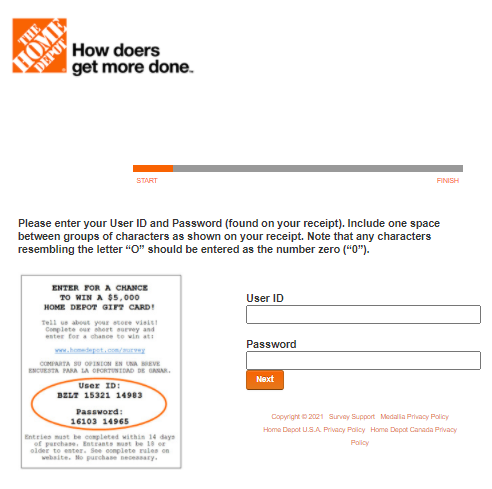
Home Depot employs a considerable incentive (the chance to win a $5,000 gift card) to compel customers to complete their survey. This is an excellent tactic if you need a longer survey and are trying to gain focused feedback on multiple touchpoints.
For many brands, $5,000 is a lot of money. Thankfully, it’s not necessary to offer that much. Spread the love and give a 20% discount to those completing the survey, or offer a few sample-size products for free.
With this approach, you’re likely to gather detailed feedback and increase the chance of customers returning.
3) REVOLVE Clothing
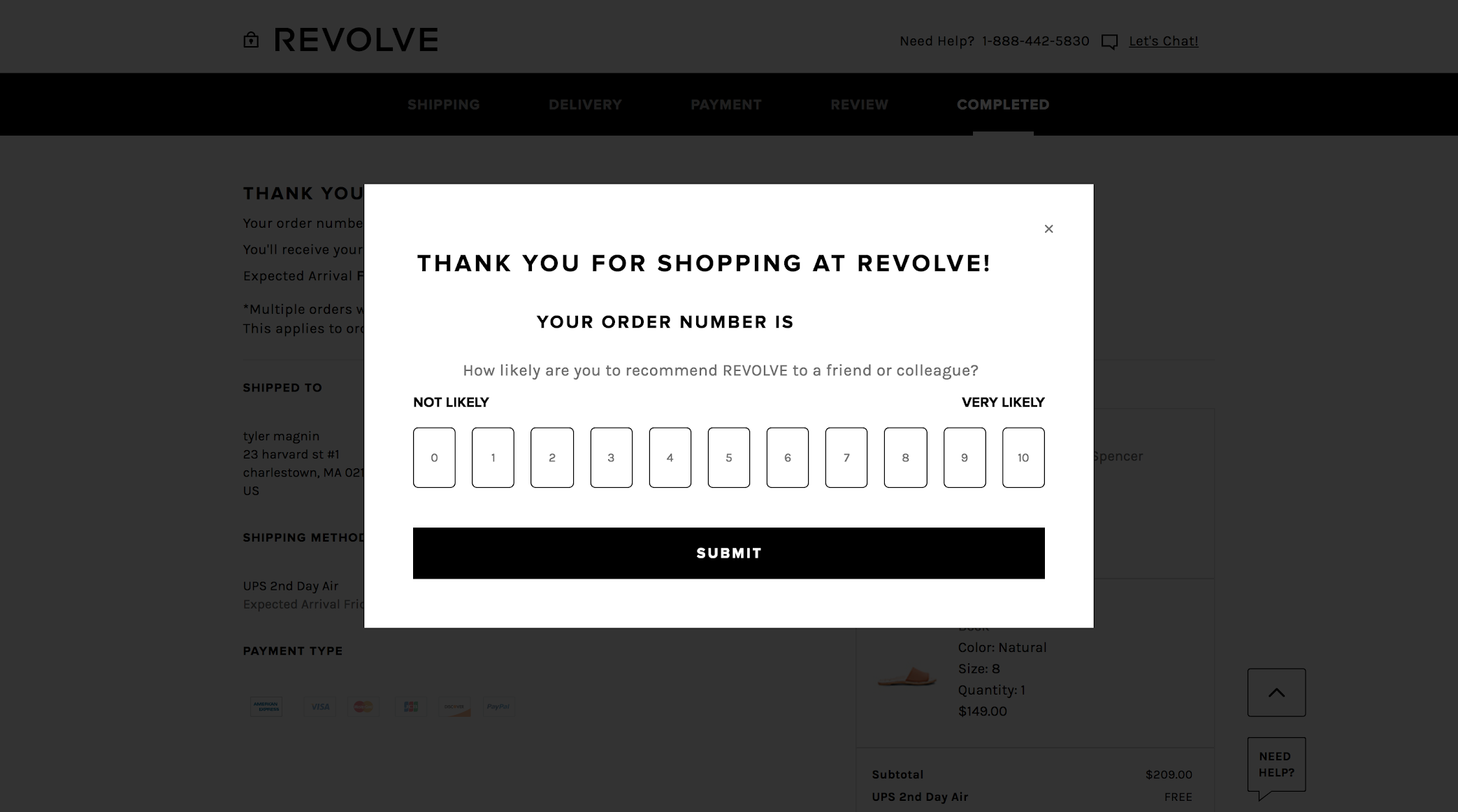
REVOLVE also makes use of a Likert scale-style question, but what’s so great about this example is its design. It appears directly after the purchase, with the order number clearly displayed to maintain the customer’s engagement. The survey’s placement takes advantage of customers’ fresh memories and requires minimal action on their part!
4) Skype

Here’s a good example of framing a question to receive feedback on product performance using three features:
- A star rating scale to assess general quality
- Multiple-choice questions in two key categories to determine specific issues
- An open text box format that lets the customer comment on anything not listed
5) Airbnb
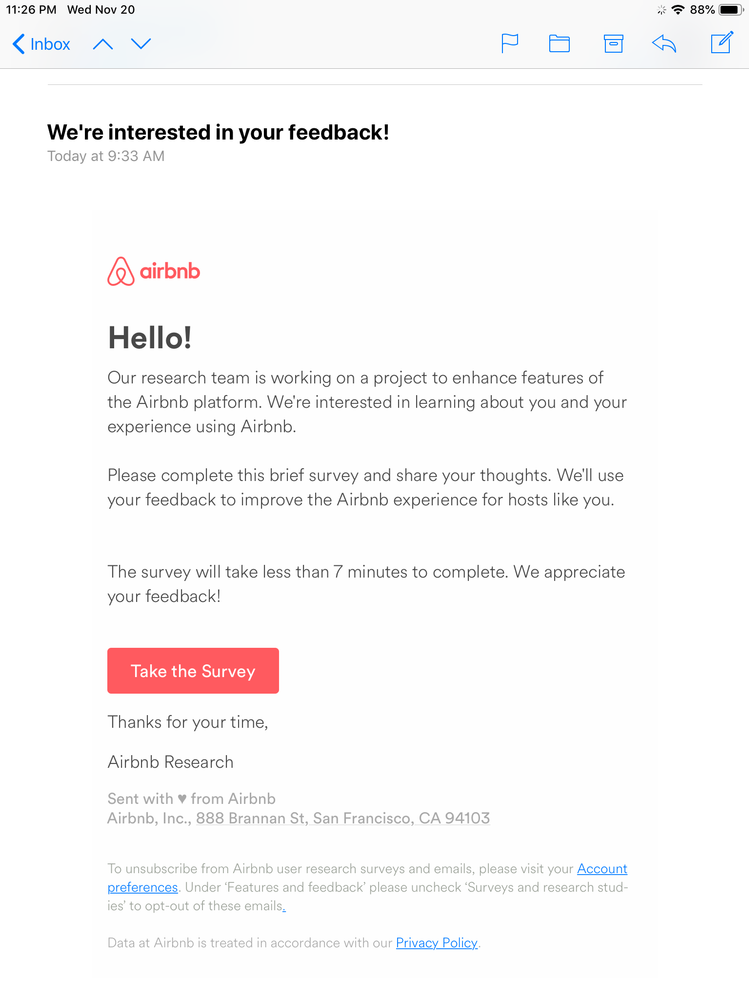
What’s a great tactic to convince customers to complete a longer survey? Tell them exactly how long it will take. It shows you respect their time and that you’re not asking for much of it. Another thing Airbnb gets right is telling the customer why their input matters, namely, to “improve the Airbnb experience.”
It’s always a good idea to peruse plenty of examples before constructing your own survey. This way, you can see what other successful businesses are doing and take inspiration from them.
What to do with the data
After collecting all that customer feedback, you need to put it to good use. Compile your data and analyze findings so you can improve your product, marketing, and customer support, or develop new SKUs.
Here are some of the ways brands leverage information gathered from post-purchase surveys:
- Identify (and fix) checkout issues or concerns
- Guide future audience targeting and communication flows
- Gather user-generated content (what our customers are saying) and spin it into marketing messaging/copy
Customer feedback is a vital component of business success, so once you have it, make it work for you.
Wrapping up – Be strategic about your post-purchase surveys
A great advantage of post-purchase surveys is their ease of use. Once you launch your first one and become familiar with the creation process, you’ll be able to adjust surveys frequently to meet new or shifting goals.
Put in the time to think strategically about your objectives, and research the kinds of questions and formats you want to implement. No matter the purpose of your data collection, getting that honest customer feedback is key to having a deeper understanding of your marketing, brand, and customers.
With effective post-purchase surveys, you’ll obtain the data you need to identify and adopt practices that will improve your business and your customer experience.
How Pacers Running Turned Logistics Into Their Competitive Advantage

Pacers Running is an iconic running shoe retailer that celebrates the journey and accomplishments of runners. They build communities by putting on best-in-class experiences for runners and delighting their customers with white glove service.
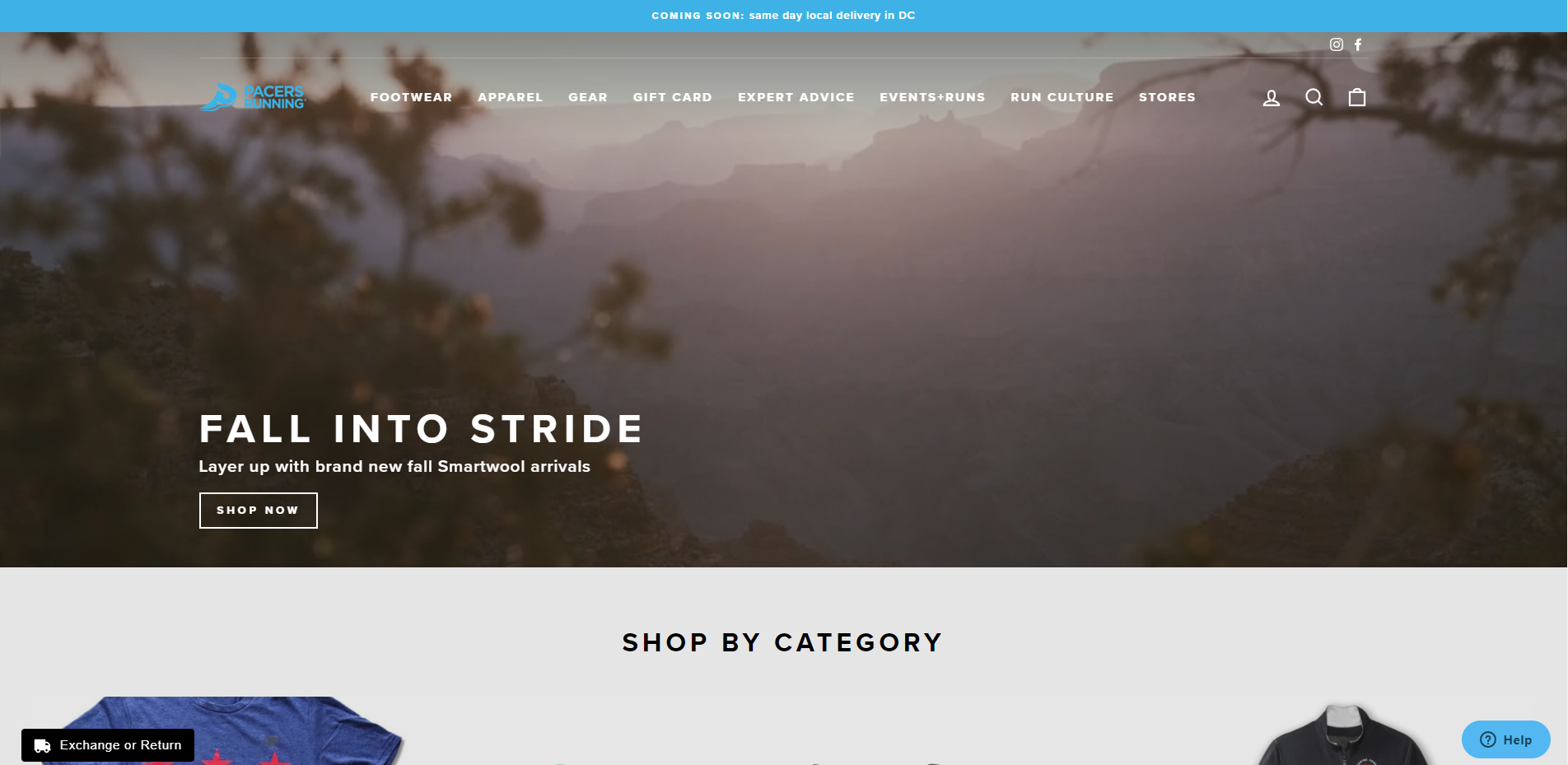
They utilize MyFBAPrep to handle their Shopify fulfillment and Amazon FBA prep, so we spoke with Pacers Running President Chris Farley to hear about how they transformed their logistics into a competitive advantage.
Building a brand
“We need multiple touchpoints with consumers, to tell them about our events and really get them out and running, walking, and being active.” — Chris Farley, Pacers Running President
Pacers Running has more than just customers — they have fans. That isn’t surprising given their dedication to the customer experience. In addition to building a movement around running and being active, they tailor their buyer experience to inspire their customers.

According to Chris, they find their Shopify channel the most exciting because they have the most control over the customer experience and are able to “dynamically communicate with these customers who go to our website, inspire them to run, talk about the next great race, and tell them stories about running.”
“If you go to runpacers.com, powered by Shopify, a lot of those shoes are shipped by our friends at MyFBAPrep.” — Chris Farley, Pacers Running President
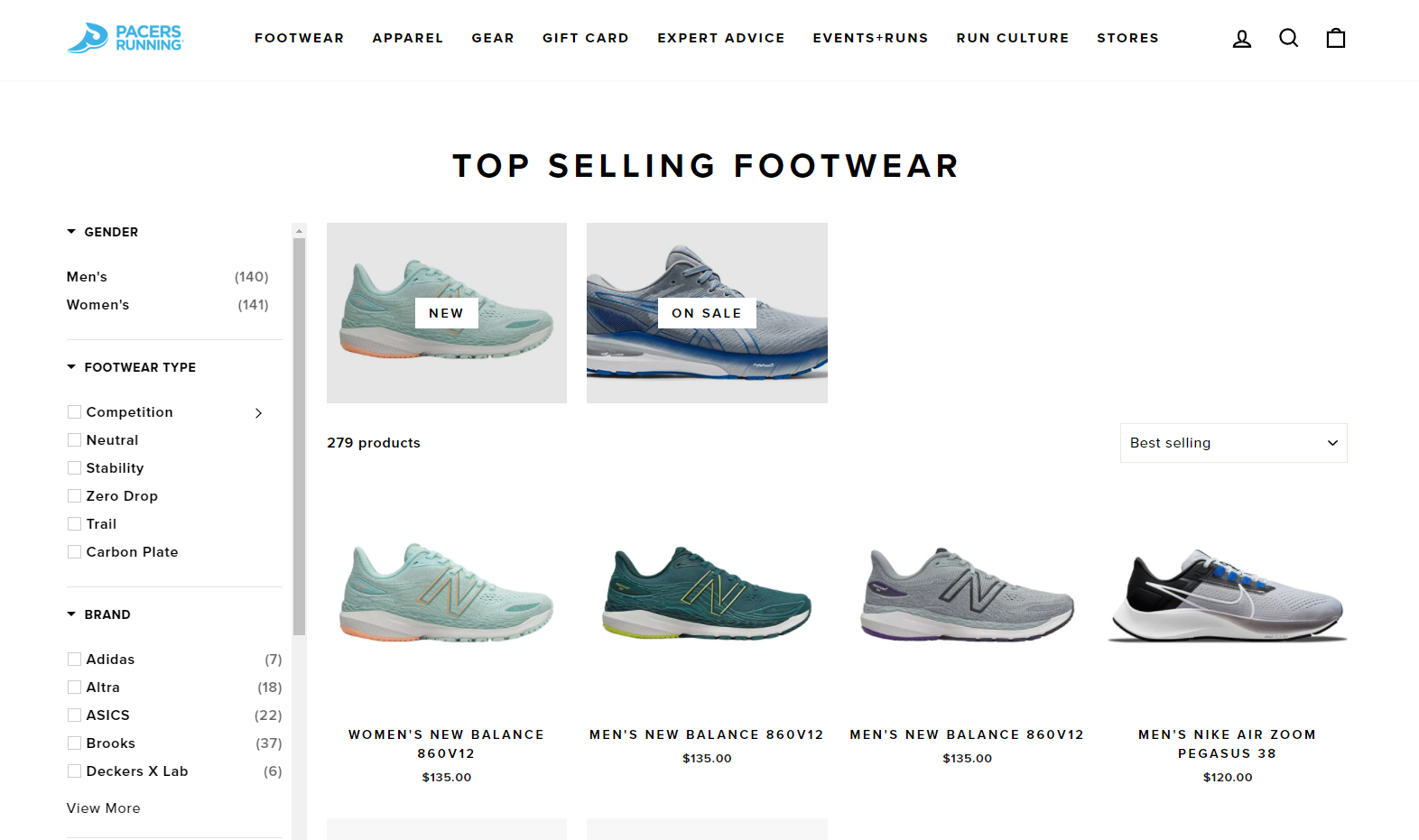
However, selling thousands of shoes a month isn’t without its challenges. So, Pacers Running worked in partnership with MyFBAPrep to find unique solutions and face these challenges head-on.
Finding an authentic partner
“I’m working with people at MyFBAPrep who are invested in our success.” — Chris Farley, Pacers Running President
Beyond viewing our sellers simply as customers, the MyFBAPrep team strives to be partners with everyone we work with. For eCommerce merchants, it’s especially important to find a reliable logistics partner who can strengthen any weak links.
“Consumer behaviors will never be the same. So, it was important for us to have a partner who would execute flawlessly on large-scale fulfillment logistics, which is not something that’s ever going to be our core competency.” — Chris Farley, Pacers Running President
Another component of being a real partner is how we work to solve merchant problems, find the best solutions, and brainstorm together.
“If you want a real partner to help you problem-solve, MyFBAPrep is a good solution.” — Chris Farley, Pacers Running President
This problem-solving approach developed a unique system for Pacers Running that works well for their needs. It’s a lens we bring to all of our sellers as we aim to be reliable and problem-solving fulfillment and logistics partners.
Forging their own path
“The advantage of MyFBAPrep is the flexibility I have in working with them to make my own path and figure out what this looks like together. There is no one size fits all.” — Chris Farley, Pacers Running President
Prior to working with MyFBAPrep, Pacers Running had a third-party warehouse and planned to use a different 3PL to handle their DTC fulfillment. When we first began working together, they wanted MyFBAPrep exclusively for FBA prep.
“We had a design that was completely different from where we are today. I started working with them in January [2021] and our design was going to be using another contractor to help us do the direct-to-consumer shoes. It didn’t work out. So, we had to scrap everything, and together, we came up with a new plan … It wasn’t just, ‘This is what we do, so we’re going to fit you into that mold.’ The attitude was, ‘Let’s learn about what your needs are, who you are, who your company is, what your goals are, and let’s go.’ That’s been a game changer for us.” — Chris Farley, Pacers Running President
When something didn’t work out, MyFBAPrep and Pacers Running sprung into action to fix the issue, with great results. We were able to find unique solutions that addressed their concerns and met their buyers’ expectations, to turn logistics into their competitive advantage.
According to Chris, “I trust it’s a significant savings and I know we couldn’t do it ourselves. And they’re a real partner.”
Taking on logistics challenges and turning them into a competitive advantage
“DTC, storing pairs, and preparing shoes for FBA have all been a huge advantage for us.” — Chris Farley, Pacers Running President

MyFBAPrep was able to help Pacers Running in three key ways:
- Tackling the unique logistical challenge of shipping shoes one at a time, at scale
- Warehousing and storing shoes to give them an edge during supply chain issues
- Prepping items for Amazon FBA with rapid turnaround times
1) Shipping shoes at scale
“Shipping shoes one at a time is not sexy or attractive for vendors, 3PLs, or anyone. And it’s really difficult at the scale we wanted. What we’re talking about is hard … and I like having partners who are willing to take on that challenge as well.” — Chris Farley, Pacers Running President
MyFBAPrep was able to create a custom racking solution tailored to handle a large number of SKUs with low quantities of each, such as a wide range of shows with multiple sizes, and a few pairs in each size. We paired this solution with innovative software that tracks every last pair of shoes throughout the entire prep and fulfillment process.
2) Warehousing shoes to mitigate supply chain challenges
“Having a partner who could warehouse shoes became a huge advantage for us. The flexibility, different plans, and different storage options we had with MyFBAPrep was vital as we faced supply chain headwinds coupled with phenomenal growth in our channel. We need to warehouse a lot of shoes as supply chains get tighter and tougher and tougher, so being able to have a partner who understood that business and worked on the fly to sideline and store these shoes effectively and cost efficiently — and be able to ultimately turn them into sales on whatever channel we needed them for — was huge. So, we really loaded up on inventory, and having that flexibility gave us a competitive advantage.” — Chris Farley, Pacers Running President
The team at MyFBAPrep always keeps an open line of communication with our merchants, so we knew about the goals of Pacers Running and that they were having supply chain issues. Understanding this meant that we were able to pivot into FBA, DTC, and storage solutions to help them beef up their logistics resilience.
By using simple software for team communication, we were able to give Chris real-time information about their shipments, while also getting updates about any changes on their end. This helped us handle their warehousing and fulfillment in a way that enabled uninterrupted sales, despite supply chain issues.
3) Fast and efficient FBA prep
“They prepare a lot of our shoes for FBA, and it’s pretty much on autopilot. I kind of take it for granted that it gets done quickly.” — Chris Farley, Pacers Running President
Initially, we had a different system in place that wouldn’t be conducive to footwear. Then, as Chris notes, “the [MyFBAPrep] team pivoted and came up with a new system that has been effective for our business.” This flexibility has helped us find the best prep process for different product lines, categories, and unique SKUs for all of our clients.
The MyFBAPrep team developed a custom prep process that reduced the number of touches per product and was applicable to all product mixes, especially shoes. We tracked our prep product by the hour, allowing us to make tiny adjustments for massive compound improvements. All of these efforts working together enabled us to get Pacers Running inventory through our system and into FBA in one to three days.
Meeting the consumer expectation for speed
“If we can’t get [shoes] out through your distribution channels and onto our consumers’ feet, we’re wasting money.” — Chris Farley, Pacers Running President
Before the pandemic, consumer expectations for increasingly fast delivery times were already rising. Chris notes, “We have to deliver on that expectation in a cost-effective and efficient way.”
At MyFBAPrep, we continue to build our warehouse network to enable the sellers who work with us to meet those expectations with network breadth, process efficiency, and creative problem-solving. We approach each issue uniquely, understanding no two merchants are alike.
Today, Pacers Running is able to deliver their direct-to-consumer orders within one to three days using MyFBAPrep’s network.
“MyFBAPrep saved us time and money, because now we’re able to react quickly, get product out, and now we have an ecosystem that scales.” — Chris Farley, Pacers Running President
The MyFBAPrep advantage
“If you want to surprise and delight your consumer, you look for a partner like MyFBAPrep.” — Chris Farley, Pacers Running President
MyFBAPrep has helped Pacers Running use logistics to give them the upper hand. Together, we’ve built a partnership and system that works for a unique business model and continuously delights their customers.
According to Chris, MyFBAPrep is an “extension of this white glove experience that we want to provide.” Experience it for yourself at Pacers Running.
“It’s really a relationship thing … we’ve been very fortunate in our business as it’s grown to have a partner that can grow and scale along with us.” — Chris Farley, Pacers Running President
At the end of the day, MyFBAPrep empowers our merchant partners to build stand-out experiences for their buyers with seamless multi-channel prep and fulfillment. We’re able to do this at scale with more than 50 warehouses worldwide, including across the USA and in Canada, the UK, and Germany. Thanks to decades of experience in logistics, the team is able to build, train, and grow our network to provide seamless and flexible eCommerce solutions.
If your business also wants to provide a high-end customer experience with every interaction, get in touch today!
How to Create Resilient eCommerce Logistics and Operations
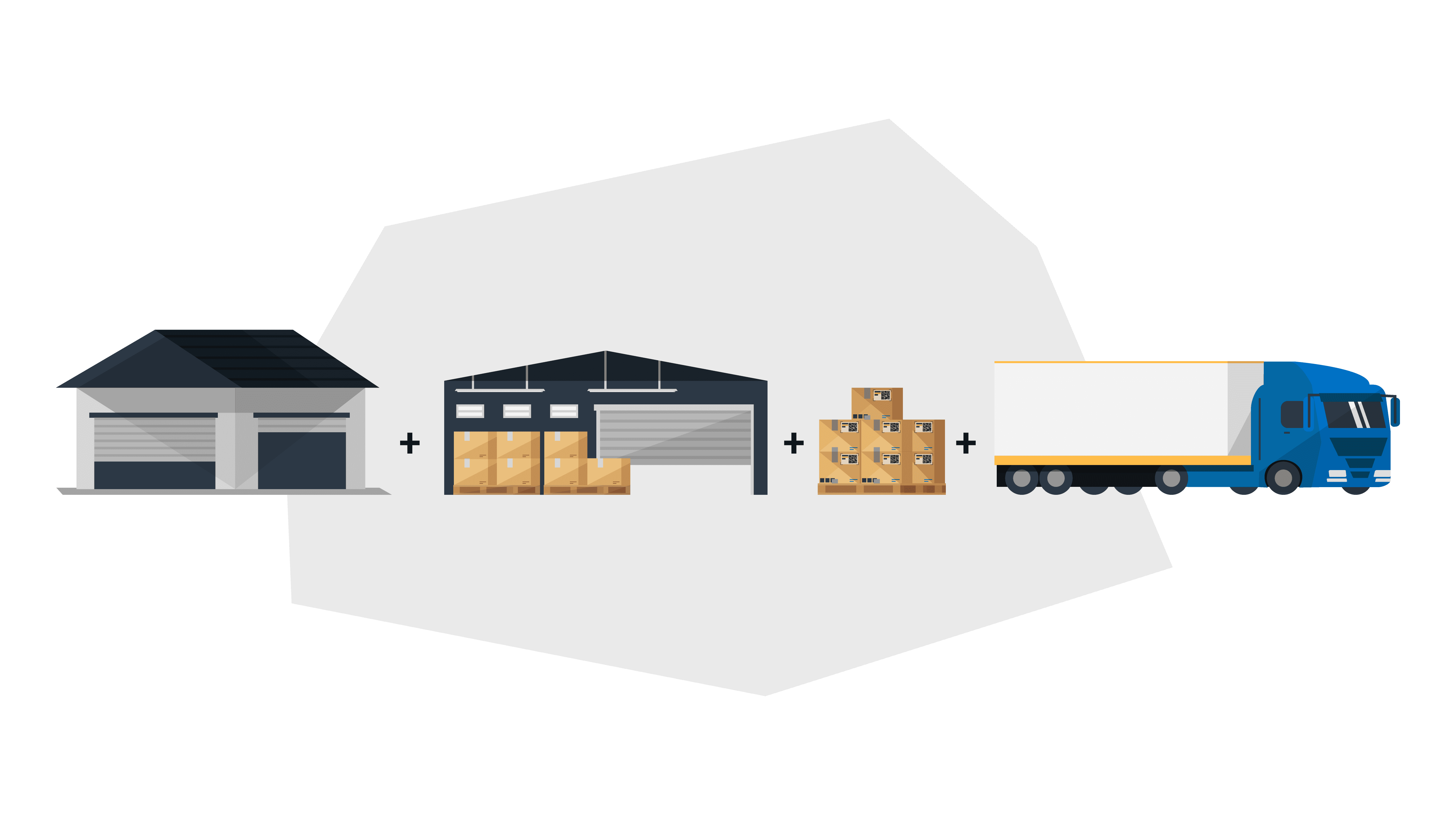
The eCommerce industry is growing a stunning 43.7% year after year, which makes it one of the most exciting to be in … but also one of the most volatile. The more pressure and demand you place on the supply chains of a single industry, the more likely things are to break. We’ve seen it happen with the backups in the Port of LA that happened in Q1 and Q4 of 2021.
This won’t improve overnight, so to protect your eCommerce business, you need to be ready for:
- Disruptions to the supply chain
- Warehouse outages and lack of space
- Shipping carrier oversights
- Big-ticket events like the holidays
All of the points above compound in big ways almost every peak season, so don’t let them prevent you from selling or scaling.
Building resilience into your eCommerce operations and logistics helps prepare you for the unexpected, and keeps you flexible and profitable. This puts you in a strong position against thousands of competitors who aren’t putting the same effort into their processes.
This article will help you reinforce your eCommerce logistics so you can stay productive despite any supply chain surprises.
The importance of resilient eCommerce logistics
Resilient logistics allows you to generate profit under different supply and demand circumstances by:
- Balancing resources based on demand
- Being able to reduce overhead or expand operations flexibly
- Overcome and eventually leverage global supply chain challenges
- Quickly adapt your business model to a shifting industry
A number of factors threaten the supply chain, and there are many indications that the world as we knew it is not coming back any time soon.
Instead of waiting for things to “go back to normal,” smart eCommerce merchants should optimize their businesses to continue generating profits despite uncertainty and change. Eventually, this will help you turn uncertainty into action and opportunity.
5 Ways to build a resilient eCommerce business
You can build resilience into your logistics and operations strategy through a few smart steps.
1) Start selling omni-channel
The future of eCommerce is omni-channel. Selling on multiple marketplaces diversifies your income and revenue streams, which makes your entire business more resilient. It ensures you stay afloat even if one of the bigger marketplaces you sell on suddenly changes their policies and makes it more difficult to operate on their platform.
Multi-channel selling also strengthens brand recognition as you establish a presence across the sales and shopping channels your consumers frequent. The best place to acquire customers is your own direct-to-consumer website so you create a direct line to your customers, but being present on markets like Amazon also aids brand recall.
Finally, omni-channel selling improves your buyer experience. Being available wherever consumers want to shop makes your brand the most convenient and accessible for them, whether they have a giftcard they want to spend on Target, or a Prime account on Amazon.
2) Invest in a flexible fulfillment partner
Fulfillment is its own business model that most eCommerce business owners never signed up for. However, reliable fulfillment is a necessity for a successful business. How quickly and efficiently you deliver items determines how much you can sell, the types of reviews you get, whether or not you meet sales channel SLAs, and your buyer experience.
If you don’t want to lease warehouses, hire staff, or rent packaging equipment, find a flexible fulfillment partner who can grow and scale with your business. This partner should be able to fulfill across all your sales channels so you don’t have to deal with multiple fulfillment processes wherever you sell.
What to look for in a fulfillment partner
Here are a few things to look for in a fulfillment partner:
- Multi-channel: They can fulfill across all your sales channels to serve your customer base with a single network and inventory pool. You should be able to send your items into one fulfillment network and receive full coverage.
- Full list of services: They have all the eCommerce services you need and can stay flexible alongside your business. For example, adjusting to offer bundling and cold storage if you suddenly want to start an ice cream subscription box.
- Vast warehouse network: They have multiple warehouses so you can place your inventory as close as possible to your buyers. This shortens the travel time for your goods and results in faster, more affordable deliveries.
- Reliable service: You need a partner who can deliver items efficiently and on time. This improves your buyer experience and ensures you meet SLAs.
- Transparent pricing: Complex pricing structures are obsolete, and eCommerce merchants shouldn’t put up with hidden fees and confusing pricing that clouds their expense and revenue estimates.
- Fast shipping: Two-day shipping (or faster) is the new normal for consumers. eCommerce must be just as convenient, if not more so, than buying retail, with fast delivery and easy returns.
For example, MyFBAPrep has 50+ warehouses internationally, a giant list of comprehensive eCommerce services for Amazon, DTC, and other marketplace sellers. Merchants can use as much or as little warehousing space and facilities as they need. This enables the sellers who work with us to adjust their fulfillment volume quickly based on their needs.
3) Diversify your fulfillment
Although we just covered choosing a reliable fulfillment partner, it’s never wise to put all your eggs in one basket, whether it concerns manufacturers or 3PLs. To build resilient logistics, you need to diversify your fulfillment. This might mean relying largely on an outsourced fulfillment partner while maintaining some in-house logistics, or utilizing marketplace fulfillment options with a multi-channel 3PL as a backup.
For example, you can use Fulfillment by Amazon (FBA) for your Amazon orders, Walmart Fulfillment Services (WFS) for your Walmart orders, MyFBAPrep for DTC orders and as a backup for Walmart and Amazon, and a small in-house operation as a backup for your DTC orders. If anything happens to FBA, the MyFBAPrep network will kick in and deliver via FBM instead.
Protect yourself from surprise storage limitations, price increases, and network outages by layering your fulfillment and spreading out your inventory risk. This also gives you the added benefit of avoiding stockouts, because if you sell out of inventory in FBA, you can continue to accept orders and fulfill them via FBM and MyFBAPrep.
4) Ensure smart connectivity between your systems
All your systems need to connect and communicate with each other in real time. When someone buys a bundle from your Shopify store, your inventory pool should reflect it and pass those changes on to your available items on Amazon, Etsy, and anywhere else you sell.
Growing merchants may have only a small handful of sales channels and fulfillment options. For example, if you sell on Amazon, using FBA and Amazon Seller Central to oversee your inventory is a no-brainer. However, as you grow, you need to balance your inventory and business everywhere you sell, all the ways you fulfill, and everywhere your inventory is tracked.
For example, think of the following business growth:
- Small seller, starting out with some test items = Sells on Amazon with FBA
- Growing seller, expanding to Walmart with their best sellers = Sells on Amazon with FBA, and on Walmart with WFS.
- Established brand, building its own website = Sells on Amazon with FBA, on Walmart with WFS, and on Shopify with MyFBAPrep.
The above seller went from one dashboard to monitor their inventory, to at least six. All of those endpoints for data need to be accurate and up to date at all times to avoid, for example, confirming a sale of items you don’t have on your DTC website that were already sold on Amazon a few minutes ago.
Most enterprise businesses build their own tooling in the back end using an ERP (enterprise resource planning) tool. However, growing businesses can also consider connecting their systems with SaaS tools like Pipe17 or Quivers.
5) Diversify your supply chain
Let’s address the elephant in the room: supply chain management. The best fulfillment network and operations are useless if you don’t have any product to sell. So, how do you avoid getting stuck with no inventory?
Here’s a few things you can do to diversify your supply chain:
- Start working with multiple suppliers and manufacturers from different countries and regions. This helps you maintain a stream of inventory, even if one avenue becomes blocked.
- Look for local sources you can work with on a minimal basis. They may not be the most cost efficient, but you can increase your order if you need them to cover a lost or late international supplier.
- Forecast for demand and order months in advance, instead of utilizing “just-in-time” sourcing that has quick lead times and could leave you stuck without inventory.
Tip: When the worst happens and you sell out, offer your customers alternatives or the option to backorder products once you restock. This helps maintain the relationship despite not having the items they want.
What happens when your supply chain fails?
Our best advice is to stay transparent throughout the process and keep your customers in the loop. This helps you maintain the customer relationship, saving your CLV, and also provides more clarity for your shoppers.
According to Shopify’s Future of Commerce report, 66% of consumers are already aware of supply chain delays, “and they’re looking for transparency. Forty-five percent of shoppers are actively looking to shop from businesses that clearly show anticipated delivery times.”
Wrapping up — Build your business for the future by investing in resilient logistics today
eCommerce is evolving quickly, showing no signs of slowing down, and it will continue to go through rapid periods of change for years to come. There will always be curveballs, shifting trends, and supply chain surprises.
Building an eCommerce business with a foundation of resilient logistics and operations helps ensure you’re prepared for that future, no matter what it brings. It can affect the course of your success, give you an advantage over competitors, and help you weather any storm.
DTC eCommerce Customer Acquisition: 10 Ways to Get Shoppers to Your Site
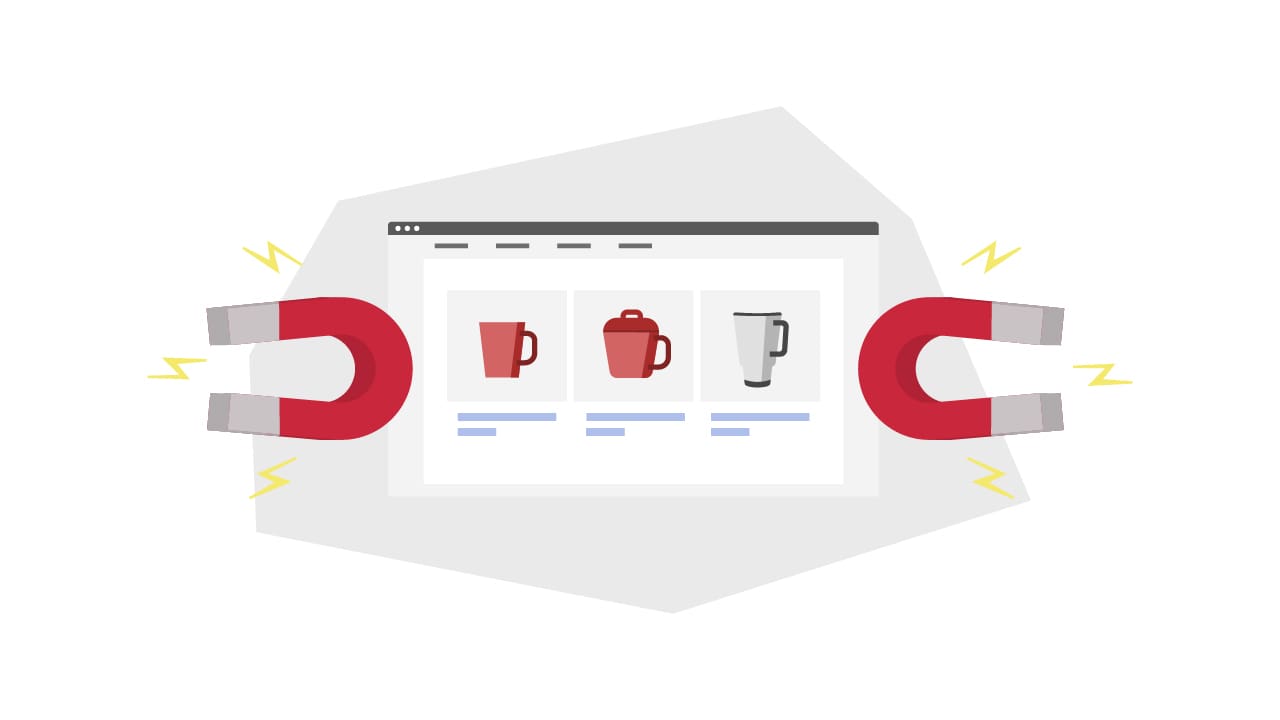
Your brand will always need to invest in DTC customer acquisition, since you’ll always need an influx of customers. But it’s possible customers may no longer need you. It’s a harsh truth, but one you need to face.
Today, the average person sees up to 5,000 ads per day. On Amazon alone, a whopping 78% of searches are also unbranded, underscoring how an increasing number of shoppers are trying brands they’ve never heard of before.
In this hyper-competitive environment, it’s critical to invest in a solid customer acquisition strategy that keeps your brand front and center. Without one, you could be leaving money on the table and exposing prospects to the influence of your competitors.
This article breaks down what you need to know to create a customer acquisition plan. Keep these tips in mind as you consider the right mix of channels and tactics for your business.
Why you should invest in your direct-to-consumer (DTC) strategy
Selling directly to consumers is essential in today’s eCommerce climate. High competition and a multitude of sales channels necessitates having a direct line to your customers.
Here are just a few reasons why it’s so important to invest in DTC.
Own your customer relationship
When someone makes a purchase on a marketplace, the marketplace knows who the customer is, but doesn’t necessarily share that with sellers. There’s no way for you to contact that customer again, whether it’s to offer a new or similar product, or to get their feedback.
Having your own website means you control the customer relationship, and can capture their information. You open a direct line to your buyers so you can request reviews and ratings, learn what they like and don’t like about your items, and reach out for retargeting.
Customize your buyer experience
Marketplaces are optimized for purchase, no matter the brand. That means your listings will appear alongside your competitors’ and often be compared based on price.
When you have your own DTC website, you can customize your buyer experience. This includes featuring only your products and related SKUs to encourage higher cart values. You not only eliminate the competition from the consideration stage, you can also craft a buyer experience so enjoyable, it inspires brand loyalty.
Access additional acquisition and retention tactics
Marketplaces are strict about what you can offer and what you can request from buyers. For example, you may not be able to offer a discount or free gift in exchange for a review. However, on your own website, you can implement new acquisition and retention tactics.
For example, you can have a pop-up that offers 10% off for everyone who subscribes to your newsletter. That helps improve customer retention, since you can send customized product selections and announcements to your list. Or you can start a blog and rank in search engines to promote your website via SEO.
Diversify your revenue streams
Marketplace rules are constantly shifting, and most 3P sellers have little control over changes in policy. There’s always a risk of your listing being removed, your seller account being flagged or banned, and subsequent loss of revenue. For example, if an unhappy customer or competitor flags your company as fraudulent, you may have to stop selling until you resolve the issue and prove you’re a legitimate seller.
When you sell DTC, you diversify your revenue streams while investing in a sales channel that you own. That means there’s less risk of this sales channel being cut off. Even if a marketplace bans you, your revenue won’t drop to zero as customers can continue to purchase from you on your own store.
Reduce marketplace fees
Finally, there’s a direct monetary driver for having your own DTC channel: you avoid marketplace commissions and fees.
Many marketplaces charge a percentage of sales, which differ depending on the category. When selling directly to consumers, you bypass this fee, which means you keep more of your revenue.
Key components of a DTC acquisition strategy
There are several fundamental components of a DTC customer acquisition strategy that are meant to keep your brand running in the right direction.
Know your audience
Before you launch any strategy, you need to know who your customers are. A shocking number of businesses don’t spend enough time developing their buyer personas, and have a shallow understanding of their customers.
Knowing, for example, that your best customers are between the ages of 18 and 24, female, and live in urban areas is a decent start. Aside from that, what do your customers like to do? What do they value about products and/or brands like yours? Who in their circle influences their decisions?
The answers to all these questions will help you decide where to post your ads, how to frame your messages, and how to become an integral part of your customers’ lives. You may even discover secondary audiences in the process, like when Duck Brand learned some of its customers used their duct tape for decoration as opposed to repair ductwork.
Identify the right marketing channels
Beware of shiny object syndrome. Just because everyone and their mom seems to be on TikTok doesn’t mean your brand belongs there. Likewise, just because you can be on every social platform doesn’t mean you should.
Jumping the gun or committing to too many marketing channels at once are surefire ways to burn yourself out. Be strategic about your channel selection. Find out why your customers use certain channels and how often. For instance, even though your buyers may be on TikTok, perhaps they’re on it solely for comedic relief. Your ads for vitamins may therefore receive little engagement because they involve more serious, educational content.
Going one step further, you’ll need to analyze your own strengths and willingness to commit fully to new channels. In order for those platforms to work, you need to be ready to test, analyze, adapt, then test again on repeat. Do you have the bandwidth and discipline to do that?
Set the right budget
Needless to say, some acquisition channels cost more than others.
All of them require some sort of capital, even if it means just borrowing from the resources you already have (staff, tools, etc.). For this reason, you’ll want to know your expected budget up front.
Consult various resources, experts, and past reports if you’re not sure what that number will be. As you experiment with channels, keep track of your customer acquisition cost (CAC). This is the total of all of your sales/marketing costs divided by the number of customers gained over time.
CAC, alongside metrics like customer lifetime value (CLTV), will help you determine what’s working and what’s not.
Set your goals and timeline
You’ll need to give yourself descriptive goals and milestones to work towards. Instead of simply saying, “We want more website visitors,” come up with specific goals like, “We plan to get 10,000 more website visitors in three months, which should produce 250 new customers.”
It’s okay if your goals feel ambitious or slightly arbitrary at first. The purpose is to hold yourself accountable to a goal, which can be adjusted over time as you gather real data.
Aside from providing a sales number to target, your goals help you prioritize efforts and keep your team focused on the task at hand. While your team should know when to abort a mission (like when sales or costs reach dangerous levels), you should always strive to finish what you started, whether that means proving or disproving a hypothesis.
Know who (or what) needs to be involved
Assemble the right team members before the start of a campaign. Get team buy-in as well as time commitment so your efforts don’t stall in the execution stage. Remember to have a process for “managing up” and to anticipate (as well as invite) feedback from team members along the way.
Pro tip: To avoid endless rounds of revisions, give your team deadlines for feedback and clear instructions for the type of feedback you’re looking for. Sometimes the worst type of scope creep comes from the broad question, “Thoughts?”
Last, but not least, know what tools you’ll require ahead of time to achieve your goals. You may wind up needing more from the budget for new software, or extra time to learn a new system. It’s better to anticipate these needs before embarking on a campaign than to be surprised later.
What are some customer acquisition channels? Try these 10 first
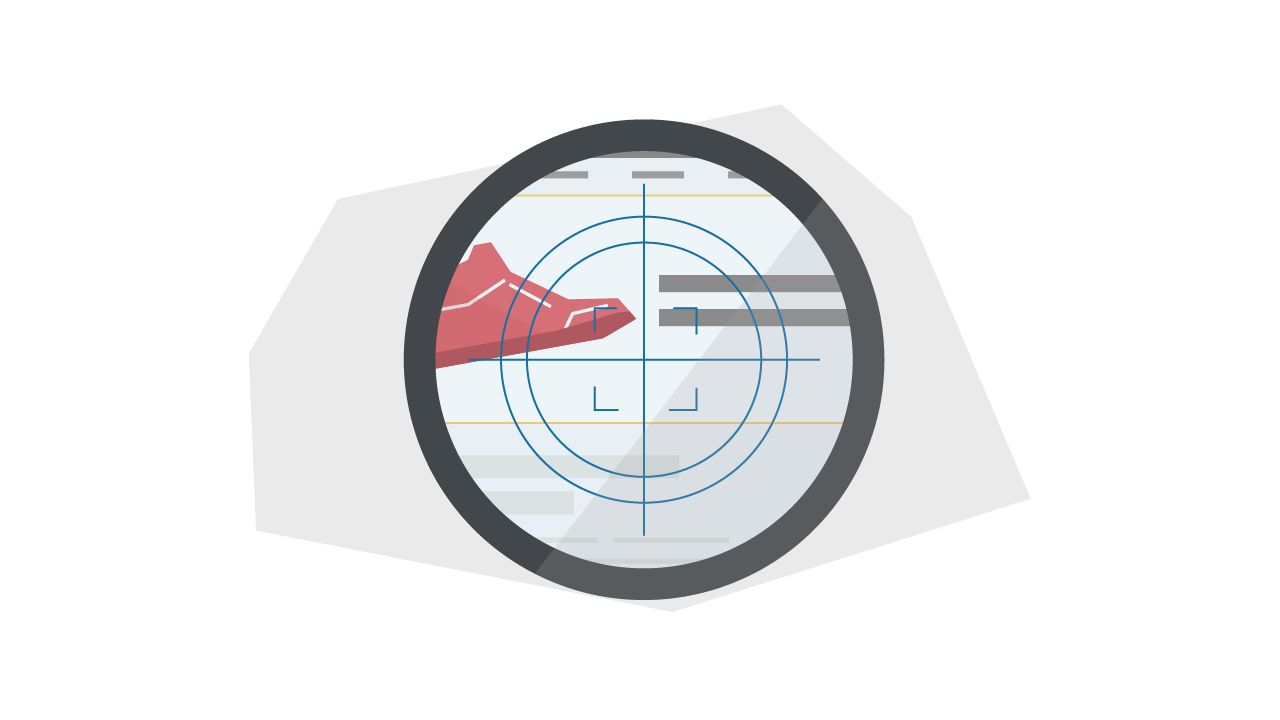
Without further ado, here are nine strategies for acquiring new eCommerce customers. You certainly do not need to (and probably should not) tackle them all at once. However, each tactic can offer a unique benefit to your business.
1. SEO and blogging
Blogging is easy to start, but hard to maintain if you’re not prepared to invest in the long term. SEO practitioners will always tell you it can take up to six months for you to see the fruits of your labor — and for that to even happen, you’ll have to commit to consistent blogging and a strong keyword strategy.
If done well, however, a blog presents a huge opportunity to build your brand authority and to bring in organic site traffic day in and day out.
Read: Why every DTC store should have an SEO strategy (and how to do it)
2. Organic social media
Social media is where word-of-mouth marketing occurs in the modern world. Just one viral post can put your brand on the map, while consistent engagement can help you build a loyal following.
Note that customers may already be turning to social media to complain about products, ask questions about your brand, perform research, or request other forms of support. They may also follow influencers in your space who could be great brand ambassadors, assuming they have a need for your products.
Read: How to use social media for DTC success: Influencers, engagement, and customer support
3. Brand partnerships
Brand collaborations are a powerful way to tap into new, established audiences. Just like with peer-to-peer recommendations or influencer marketing, a trusted brand can influence consumers to consider a new brand like yours.
There are many options in terms of brand partnerships: product collabs, co-hosted events, blog swaps, newsletter shout-outs, or all of the above.
As you consider other brands to partner with, make sure you can provide value in return; any marketing collaboration should be mutually beneficial.
Read: How eCommerce sellers can use DTC brand partnerships to boost reach and sales
4. Influencer sponsorships
Working with influencers delivers more for some industries than others, but if you find the right partnership and process, they can bring a continuous stream of customers for one sponsorship fee.
For example, if you’re in the beauty industry and sponsor a video by a well-known beauty blogger, that video has the potential to continue generating income as long as it appears in relevant search results on YouTube.
Read: Influencer marketing strategy: How to find the right partners for your brand
5. Google and social media ads
Paid social media or Google ads along with a relevant landing page can yield more immediate results than organic tactics (albeit requiring close monitoring). However, targeting options are more limited than years prior due to privacy laws.
That said, you can still target keywords with high purchase intent and interests that get your brand in front of the right people. Another (generally cheap) type of advertising is retargeting, which involves targeting an existing list of leads and web visitors. Note: each channel has a threshold for how big your contact list needs to be before it can show them ads.
Read: Facebook ads vs. Google AdWords: Which is better for your eCommerce brand?
6. Webinars and events
Events let you engage with customers more closely and associate a friendly face with your brand. You can host live product demos or offer an in-person event related to their interest.
For example, if you sell workout gear, you could consider hosting a fitness class that incorporates your equipment.
Events allow you to collect contact information, engage customers in a fun way, and form deeper connections. Clips from these events can then be repurposed across your social accounts, blogs, or emails to spread brand awareness.
Read: How DTC sellers can use webinars and events to boost their brand (and get more sales)
7. Email marketing
Email marketing goes hand in hand with both paid and organic acquisition tactics. With email, you can keep your brand top of mind and consistently engage prospects with content that’s tailored to their interests.
As an eCommerce brand, you also have the unique opportunity to use purchase-related messages (like email receipts, which get high open rates) to suggest other products or promos, as you would in a newsletter or drip emails.
Read: 7 Keys of eCommerce email marketing
8. Referral programs
Referral programs are a great way to nurture existing customers into brand ambassadors. They can be as simple or advanced as you want them to be.
For example, you can offer a discount prize in return for a referral, or launch a full-fledged loyalty program with various rewards for different actions.
Referral programs help you gain new customers as well as keep existing ones engaged and involved in your marketing.
Read: How to launch a referral program for your eCommerce brand
9. Giveaways and contests
These limited-time events are often used to collect user-generated content (UGC) that can be displayed as social proof on your site.
You can ask customers to post a photo or video of them using your products for a chance to win a prize. Pair this with a hashtag or a “follow” campaign to glean even more ROI from your contest.
Read: How to boost eCommerce conversions with giveaways and contests
10. Host livestream shopping events
Live shopping is when you stream product demos live on platforms like Instagram and TikTok, then allow consumers to purchase from you on the stream. For example, you could be showcasing a new product release on Facebook Live, drop the link to the product if they want to purchase, and then answer any questions that come in on the stream as well.
This provides a more interactive experience for your customers and potential buyers, where they can see the product in action, ask any lingering questions, and interact with your brand directly.
Read: Live shopping: How to use livestream videos to boost eCommerce conversions
Wrapping up: Build a DTC customer acquisition plan
Don’t wait around for your customers to seek out your brand. Proactively find and approach your consumers using a combination of the strategies above. There are countless tools, channels, and tactics you can choose from — don’t let them go to waste!
Guide to eCommerce Customer Retention: 10 Ways to Keep Them Coming Back

eCommerce sellers should never assume that a single purchase means a consumer will keep coming back. There are countless brands all vying for your customers’ attention—and marketplaces like Amazon are quickly eroding brand loyalty.
However, taking an active stance on customer retention can improve your chances of bucking this trend. In fact, studies show that a 5% increase in customer retention can lead to a 25% increase in profit.
Check out the tips below to build a strong customer retention strategy, and learn how to turn existing buyers into long-term customers.
The importance of eCommerce customer retention
It’s cheaper to maintain
Recruiting new customers costs five times more than retaining existing ones. This is fueled by the fact that most marketing teams are focused on generating new customers through ads, events, and other costly campaigns.
By contrast, retaining an existing customer could mean leveraging your existing resources and simply reinforcing a customer’s positive impression of your brand. A simple email, quick SMS, or engaging social post could be all it takes. This tends to result in a better ROI.
You’ll land more (and possibly faster) sales
When you’re reaching out to an existing customer, you don’t have to spend as much time educating them about your brand. You can cut to the chase and share relevant information through personalized product recommendations and/or promotions.
Your efforts are likely to result in quicker transactions, since customers already know that they can trust your brand with their money.
It keeps your brand thriving
All in all, customer retention is a major factor of brand longevity and customer lifetime value. If your company is struggling to keep buyers coming back, then you’re losing relevance and missing out on profitable opportunities, like word-of-mouth marketing. For your brand to stand the test of time, you must actively work to keep your brand top of mind.
10 Examples of eCommerce customer retention strategies
So, what can you do to retain more customers? Here are eight tried-and-true strategies that you can test out.
1) Start a loyalty program
One of the best ways to keep customers coming back is by rewarding them for their commitment to your brand. Paleo-friendly food company, Caveman Foods, puts this into practice via its Caveman Club Rewards program.

The brand promises special promos, early access to new products, and a points-based system that helps members save money with every purchase. Caveman goes a step further by offering points in exchange for a ‘follow’ on social media, and a $10 discount when buyers refer a friend.
Read: Customer loyalty programs: 8 Benefits you can provide to encourage repeat customers
2) Offer auto-replenishment
Another way to clinch a sale is by making it ridiculously easy to repurchase from your brand. Subscription services like Paula’s Choice auto replenishment, for example, helps to ensure that customers never run out of their necessities.
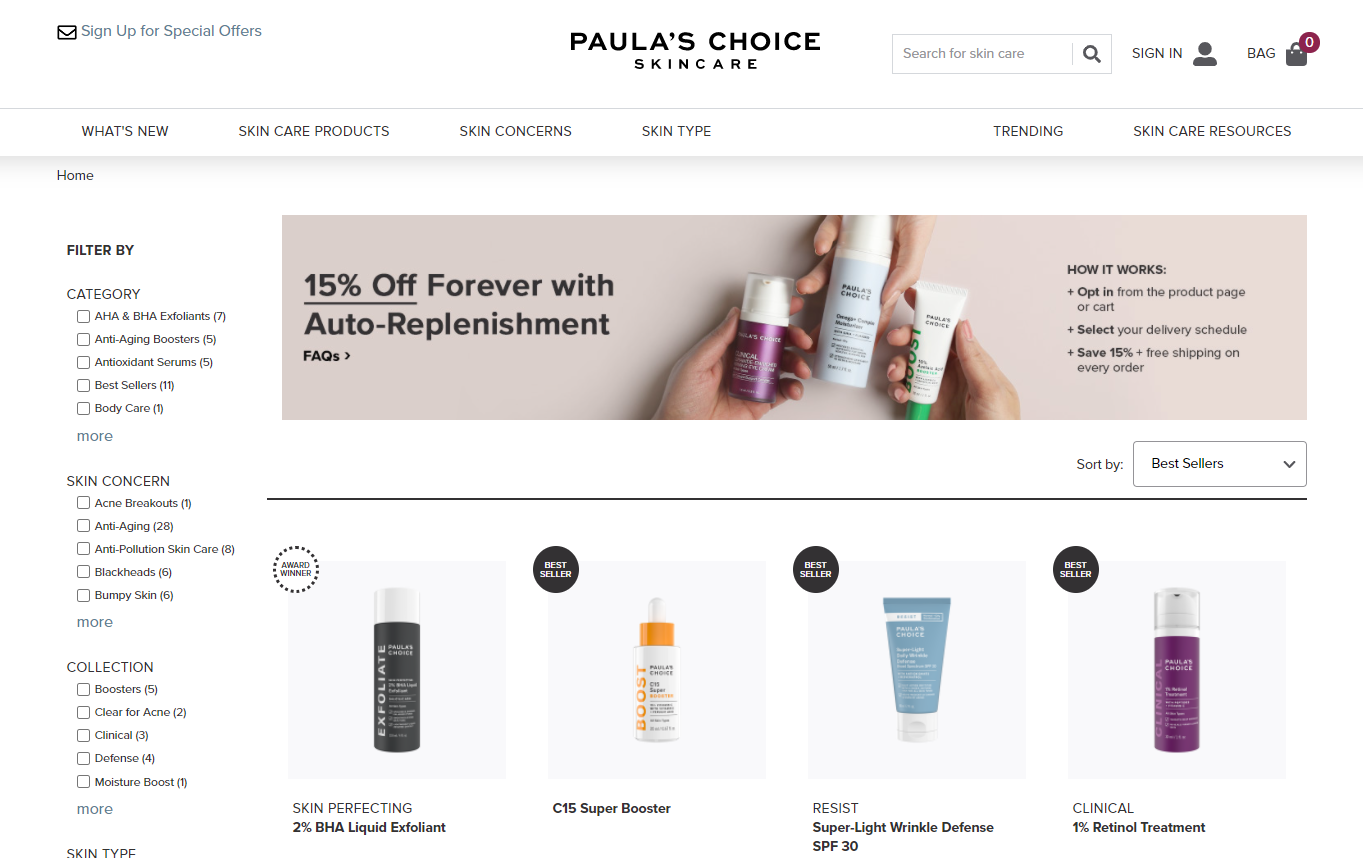
Subscribers save 15%—plus get free shipping—on every order and can choose how often their products are auto-replenished.
Read: How to use auto-replenishment as your next subscription strategy
3) Launch subscription boxes
Subscription boxes, such as Cratejoy, add an extra pinch of excitement to every customer interaction. They make customers feel like they’re receiving a present every time they open a box full of new items.
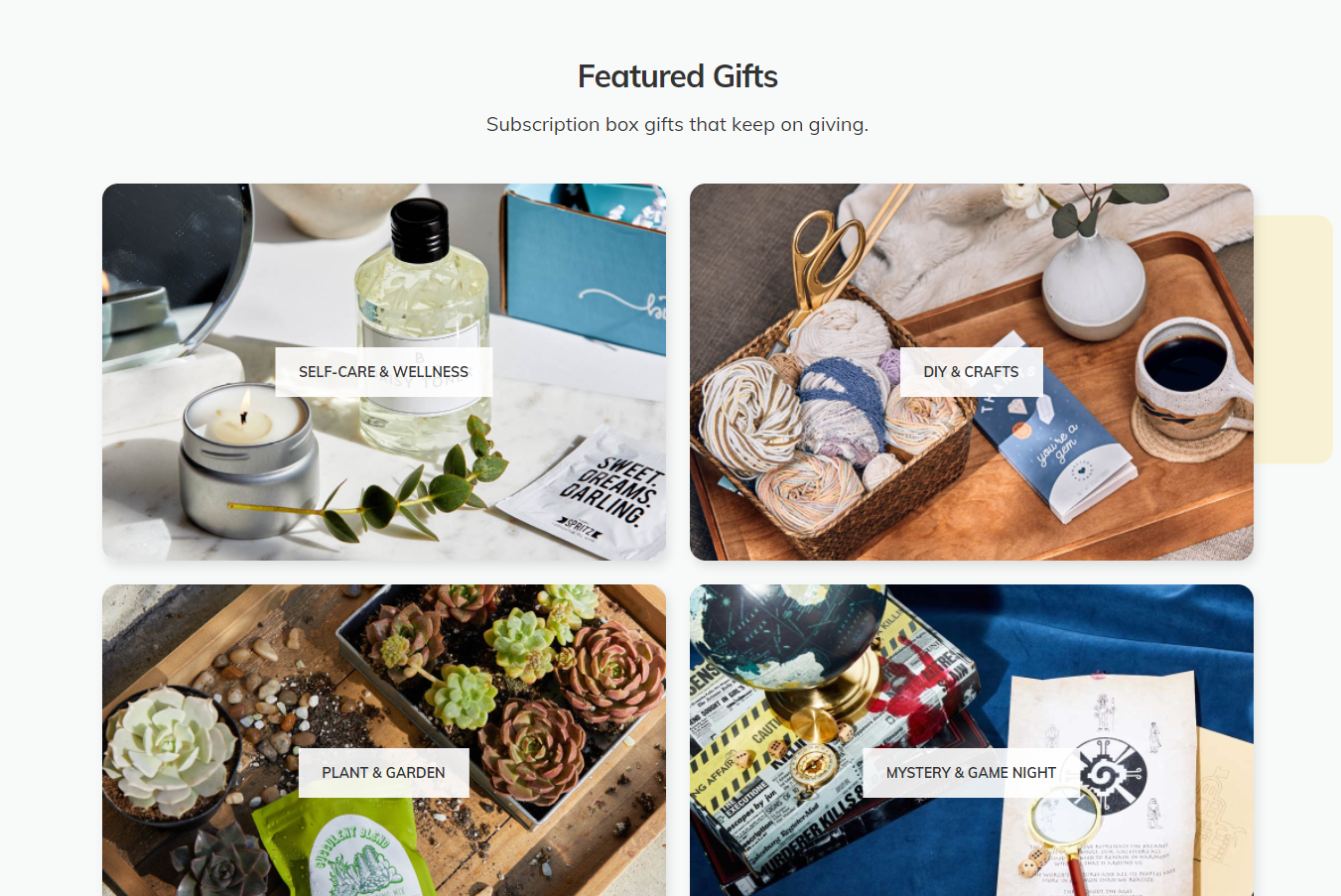
Subscription boxes are delightfully personalized to every recipient, make great presents for others, and are highly Instagram-able, providing an opportunity for your brand to boost its virality.
Read: How to start a subscription box business: 15 Subscription boxes to create today
4) Send out email marketing
Whether it’s a newsletter, promo emails, or abandoned cart messages—going the extra mile and actively emailing your customers can go a long way. Today, only a mere 19% of the top 1,000 eCommerce companies engage in abandoned cart recovery, even though half of customers will likely complete their purchases when asked. Make sure you don’t leave money on the table by forgetting to check in with your customers regularly.

- (Source: Really Good Emails)
Read: 7 Keys of eCommerce email marketing
5) Utilize retargeting ads
Think about all the times you were browsing Amazon, then left, only to stumble across an Amazon Gift Guide post on Instagram an hour later. This is a classic example of retargeting.
After someone comes across your site, you can leverage social media or Google to serve up content that brings visitors back to your site. This is key to modern-day marketing, where it takes around eight branded touchpoints for a buyer to make a purchase.
6) Focus on fast, frictionless delivery
It’s easy for many customers to take quick delivery for granted. But, by keeping your promises (or shipping faster than expected), you can leave a good impression that incentivizes buyers to repurchase from your brand.
Consider, also, how you can make tracking shipments easy. For example, you can notify buyers the moment that their products are packed, shipped, and delivered so that they remain in the loop at all times.
Tip: Optimize your fulfillment operations with the right partner, from prep and packaging to delivery.
7) Give them easy checkouts
How many clicks does it take for someone to find what s/he is looking for on your site? Is there anything within the user experience that’s causing shoppers to ditch their shopping carts?
One culprit could be extra checkout requirements, like forcing buyers to register for an account instead of signing out as guests. Ensure that your UX is smooth from start to finish before inviting customers back to your site.
Read: How to optimize your checkout process
8) Communicate with SMS
One way to provide a great customer experience is by using SMS strategically as a communication channel. You don’t want to lean too hard on marketing via this channel, as it may come across as spammy, especially since it goes directly into their phone’s notifications.
However, if you can capture your buyers’ phone numbers during checkout or give them the option to opt-in to text messages, this is an amazing channel that most consumers check at least 5x every hour.
Try using SMS to confirm purchases, communicate shipping status, and share tracking numbers. This primes your text messages as “useful content” in the minds of your buyers, so they’ll be more receptive to the occasional marketing text (if they’ve opted in).
Read: How to leverage SMS marketing for your DTC business
9) Provide great customer support
Customers always want to feel supported, especially when they’ve encountered issues with their orders. At bare minimum, you’ll want to make sure that your brand is accessible via phone, email, and/or chat when this happens.
Avoid burying your contact information under multiple pages, and make sure to respond to inquiries promptly. Buyers tend to connect best with people, not brands—so make it a priority to offer great customer care.
Read: How to use post-purchase surveys to boost your eCommerce brand
10) Have a clear return policy
Finally, it’s important to have a transparent return policy. Make it easy to find by placing it in your FAQs, or offering a link upon checkout. You should outline how many days a customer has to return an item, what qualifies for a return, and alternative options (for example, if they would prefer to get store credit instead).
Wrapping up: eCommerce customer retention strategies
One of the worst mistakes your business can make is taking your existing customers for granted. Your customers could be some of your biggest brand advocates. Take the time to show them that you care and prove that you deserve their business, now and in the future.
9 Signs it’s Time to Shift From Your Own Warehouse to a Nationwide Network
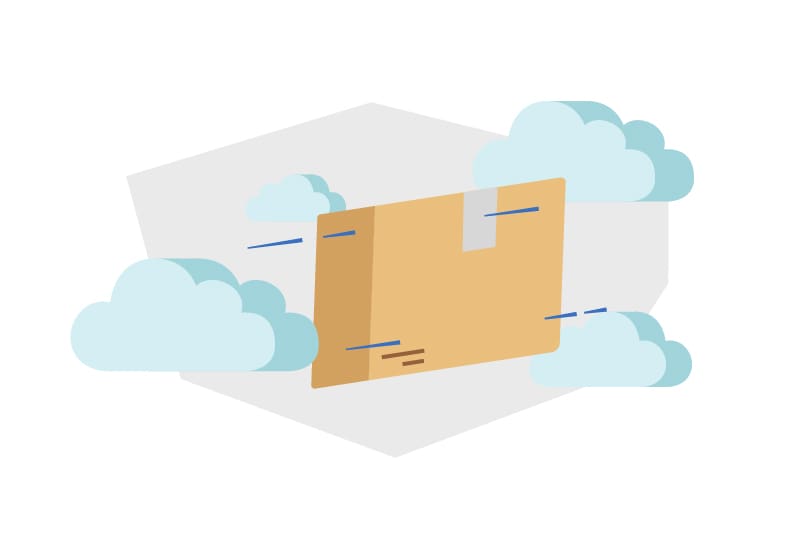
Many growing eCommerce businesses end up investing in their own warehouses to streamline and take full ownership of their operations as they begin to scale up. For larger eCommerce businesses, owning at least one warehouse is often a given.
There’s no question that in-house warehousing brings enormous benefits, from full control and ownership of the process and products to the ability to call the shots around accepting shipments and beyond. But, there are downsides as well.
Warehousing your own goods comes with many costs, from purchasing or leasing the warehouse itself to hiring employees and machinery, managing deliveries and shipments, and the necessity to learn about various rules, regulations, and processes for warehousing prep for various online marketplaces. Then there are there the requirements around delivery times, marketplace compliance, and service level agreement results to manage.
For small to medium-sized eCommerce businesses, holding your own and managing inventory, warehousing, and prep might work just fine. But for eCommerce professionals seeking to expand, identifying a warehousing and prep partner is one of the single most effective ways to change your business for the better.
If you’re an eCommerce entrepreneur, you already know that there’s never been a better time to sell online. As COVID-19 impacted consumers’ ability to shop in-stores, online retailers are grew at breakneck speed and the average shopper learned how to adopt — even embrace — eCommerce.
For eCommerce businesses seeking to scale up and optimize their business, understanding how outsourcing your warehousing and prep can benefit your bottom line and help you grow is important. Here’s how to know the time is right.
9 signs it’s time to expand to a nationwide warehouse network

1. You’re running out of space
Your existing warehouse has a finite amount of space, no matter how you configure and reconfigure the storage. If you’re beginning to feel cramped, it might be time to consider outsourcing your warehousing and prep as opposed to finding a second or larger warehouse. Why? Bigger spaces (or additional spaces) cost more, require additional staffing, and the expansion is pretty minimal in the grand scheme of your business. By outsourcing your warehousing and prep to a nationwide warehouse network, you gain the benefit of additional space along with a network of multiple locations with a single partner.
On the other end of the spectrum are concerns around seasonality, where certain times of the year may result in higher sales volume and others are quieter. If you’ve purchased a large warehouse, you’ll carry all those costs even when your inventory isn’t filling it completely making it even less cost-effective. A nationwide warehousing partner can help you better manage warehousing costs while eliminating concerns around the ebb and flow of inventory and business so you never have to fret about underutilized space or running out of room again.
2. Your manufacturer doesn’t want to get involved
Many eCommerce sellers we work with have a shared challenge — their manufacturers don’t want to work with Amazon or other marketplace prep requirements, and don’t have time to do things like bundle, label, or polybag individual products.
In this case, you’ll want to partner with a nationwide warehouse and prep network like MyFBAPrep to handle your goods, so that they can be uniformly prepared across various geographic locations before landing on your buyers’ doorsteps or into FBA.
3. Your processes aren’t as efficient as they could be
A common complaint from merchants is that manufacturers are unwilling to get involved beyond the initial manufacturing process, which means they can’t get their items pre-prepped for sale and delivery unless they’re doing it themselves. Depending on the marketplace — Amazon and Walmart, for example, have varying requirements — this can take up large amounts of time as you prep, package, and label goods for fulfilment. And, depending on the manufacturer or supplier, your stock could require more or less prep — making your processes even more difficult to streamline.
If you’re managing prep yourself at your own warehouse, you’re receiving shipments of goods which must then be inventoried, checked, and then manually prepared for fulfilment based on the marketplace(s) you sell on by you or your employees. With varying requirements for different products and marketplaces, this can create an enormous burden — and slows you down.
If you’re currently manually training employees on their tasks, prepping, and assessing/checking your entire inventory for fulfilment readiness, you’re losing time and money that could be spent expanding your business.
With an outsourced approach, you eliminate the time spent bringing your employees onboard, training, and doing the manual preparatory work and can refocus that time on business expansion efforts.
4. You’re growing fast
Is there any better problem to have? (We think not!) While fast growth is the best possible situation for any business, the simple fact is you need a warehousing and preparation solution that can grow with you so that you’re able to expand quickly, not scramble to find a new warehouse and hire and train more staff.
As you grow, so too will your expenses: a larger facility with higher bills, more employees (including recruitment costs), and more stress for you to manage it all.
With a warehousing partner, you can simply send your items to the warehouse network and keep on selling more and more without the worry of managing logistics.
5. You need expert guidance
Even the most experienced eCommerce business owners need support from time to time, especially if you’re switching things up. As you tweak your business, you may choose to expand your sales channels from a singular channel to multi-channel expansion or switch up your selling strategies.
Many eCommerce businesses begin with 1P relationships that allow them to test how various channels will fit with their business model. Once you’ve established that a channel is right for you, it’s time to move up.
If you’re currently in a first-party relationship (1P), you’re not in total control of price or sales as you’re selling to the marketplace and who then goes on to sell to the consumers. While there’s nothing inherently wrong with 1P selling, at the end of the day you have less control of your business and lower margins. But the shift from 1P to 3P isn’t always clear, which is where an outsourcing partner comes in.
3P is a third-party relationship, whereby you are the retailer and sell directly to your buyers on the marketplace. This does two things: First, it puts you in control of our sales and margins and secondly, it removes the dreaded “middle man”.
But (there’s always a but, isn’t there?), becoming a 3P seller isn’t as simple as 1, 2, 3.
The challenge in shifting from 1P to 3P is that most brands and businesses simply don’t know where to begin. An outsourced partner can help you build and follow a strategic plan with a data-driven understanding of 3P marketplace dynamics to set you up for success. Most third party logistics (3PL) partners are already well-versed in the complexities of operational brands and are well-equipped to manage high volumes of single-line orders, sales quantities, and can keep an eye on and manage pricing fluctuations.
6. You need more coverage
As your eCommerce business grows it’s inevitable that the geographic range of sales will grow, too. When you own a single warehouse in one place, it becomes increasingly difficult and costly to serve your customers in other parts of the country. For sellers on the East Coast with buyers on the West Coast, this equals higher shipping costs, longer shipping times, and smaller margins.
By shifting to a national warehouse partner, you’ll not only have inventory located closer to your existing buyers but you’ll have the ability to expand into new markets, attracting new buyers and growing your revenue.
A nationwide solution will cut your delivery times, reduce shipping costs, and diversify your market in a meaningful and low-impact way.
7. You’re spending too much time on inventory & prep
If you’re spending 10% of your time (or more) on inventory and preparation tasks, it’s likely you’re already losing money.
Warehousing, prep, and other logistics tasks are low return on investment (ROI) activities. They’re necessary to execute well, but they don’t increasing your revenue in a meaningful way.
Now, imagine if you could refocus that time into high ROI activities — like refining or refocusing marketing, acquiring new customers with ads, researching and purchasing new SKUs, and optimizing your listings for more visibility.
When you outsource your warehousing and prep activities, you can focus your time and energy on those higher ROI activities to see a tangible difference in your bottom line. Further, when you consider the cost savings you can realize by not needing to lease space, pay bills, and hire employees, you can also funnel those dollars into revenue-generating initiatives.
8. Your current setup can’t handle all of your sales channels
As the number of sales channels you play in grow, it’s likely that managing the nuances and requirements of those channels will become more and more difficult.
For example, if you’re trying to manage prep work for Amazon while also meeting Walmart.com standards or struggling to manage delivery times for your Shopify store, it’s time to outsource.
Finding a full-service solution that can handle warehousing, prep, and logistics for multiple channels will save you time and help you realize a greater ROI through a streamlined process that delivers value to both you and your customers.
9. Your reporting can’t give you the full picture
One of the most critical elements of growing your business is making the right decisions at the right time, but for many growing eCommerce professionals, tracking metrics can be difficult and often falls to the bottom of the list as day-to-day logistics tasks pile up.
Many 3PL and warehousing partners can supplement your existing tech stack and deliver real-time metrics to help you make the best decisions for your business — like understanding what product is selling best or when, your real delivery times, and actual costs to running your business.
How to find the right warehouse and prep partner
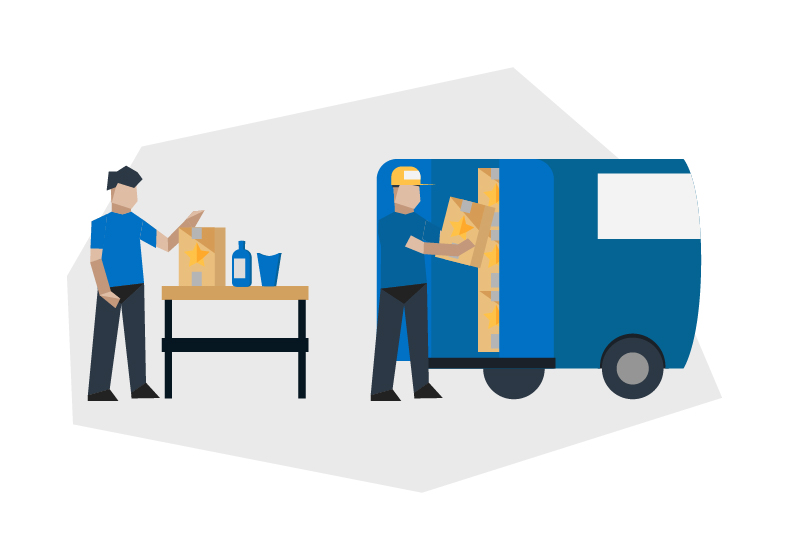
You know the time has come to outsource your warehousing, preparation, and logistics management but one big question remains: how do you find the right partner for your business?
There are many factors to consider when it comes to choosing a third-party logistics (3PL) partner. It’s important to find a partner who can help you grow and remain a partner in the long run – the last thing you want is to outgrow your solution and need to go looking for a new one!
Know where your business currently stands and where you’re going
Understanding exactly where your business currently stands and documenting or communicating your goals is critical to finding a partner who can help you achieve them. What channels do you want to expand into? How many SKUs do you currently have versus how many you want to have? Are there new product categories you plan to develop? What about your current vs. forecasted monthly order volume?
Answering these questions can help you set the list of business requirements for choosing your 3PL partner by enabling you to shortlist quickly and avoid wasting time.
Understand and clearly detail your shipping requirements
You already know that the name of the game nowadays is “direct to everywhere” which means you must be strategically selling and expanding on every online channel your customers are buying on. That’s obvious. What’s less obvious is managing the challenge of each channel’s shipping complexities.
To begin, know which channel(s) is most critical to your business and use that to determine your 3PL partner. If the vast majority of your business is Amazon Prime, you know you need fast fulfilment and 2-day shipping as a bare minimum requirement and can start building up from there.
Dig deep on pricing and determine what your margins must be
Don’t go with the cheapest partner just because you see dollar signs. Run your own numbers and communicate with prospective 3PL partners to determine what price works for you and make sure you truly understand what those prices mean. Sneaky, hidden costs can add up quickly and eat into your margins faster than you can say ‘label and bundle’.
There’s a price for everything when you ship through 3PLs — from the number of orders shipped, items picked, pallet storage, packaging and on and on and on. Use your requirements to outline storage and service needs, calculated expected costs, and determine your potential savings (or losses) with each partner.
Consider warehouse locations and network
Finding a nationwide partner who can help you break into new markets is important – and it’s especially important that your partner has a strong network of warehouses from which you can operate your business. As detailed in point number one, remember your goals: if you’re currently selling mostly in the Midwest but have goals to break into the East Coast market, be sure your partner can service that geographical area.
Strategically located warehouses in lower-priced shipping zones will allow you to maximize your shipping efficiency without incurring additional shipping costs when selling into major city markets.
Never forget the data
You need access to data that can help you understand the efficacy and efficiency of your partner against your growth goals. Even when you’re outsourcing to a 3PL partner, you need to have some fundamental warehousing processes set out.
- Master SKUs set up for all products you sell
- UPC codes and barcodes for each product
- Careful tracking of inventory costs of goods sold & profitability reporting
Many — but not all — 3PLs can provide this level of metric tracking. Determine what your comfort level is and identify ways to work with 3PLs to ensure you’re gaining access to the data you need to make the best possible business decisions.
At the end of the day, choosing to outsource your warehousing and prep is not a decision you’ll make lightly. It’s important to choose a partner who understands your business, is reputable and knows the ins and outs of warehousing and the preparation required for a variety of digital marketplaces. By outsourcing warehousing and prep,
6 Key Factors to Consider When Choosing a 3PL
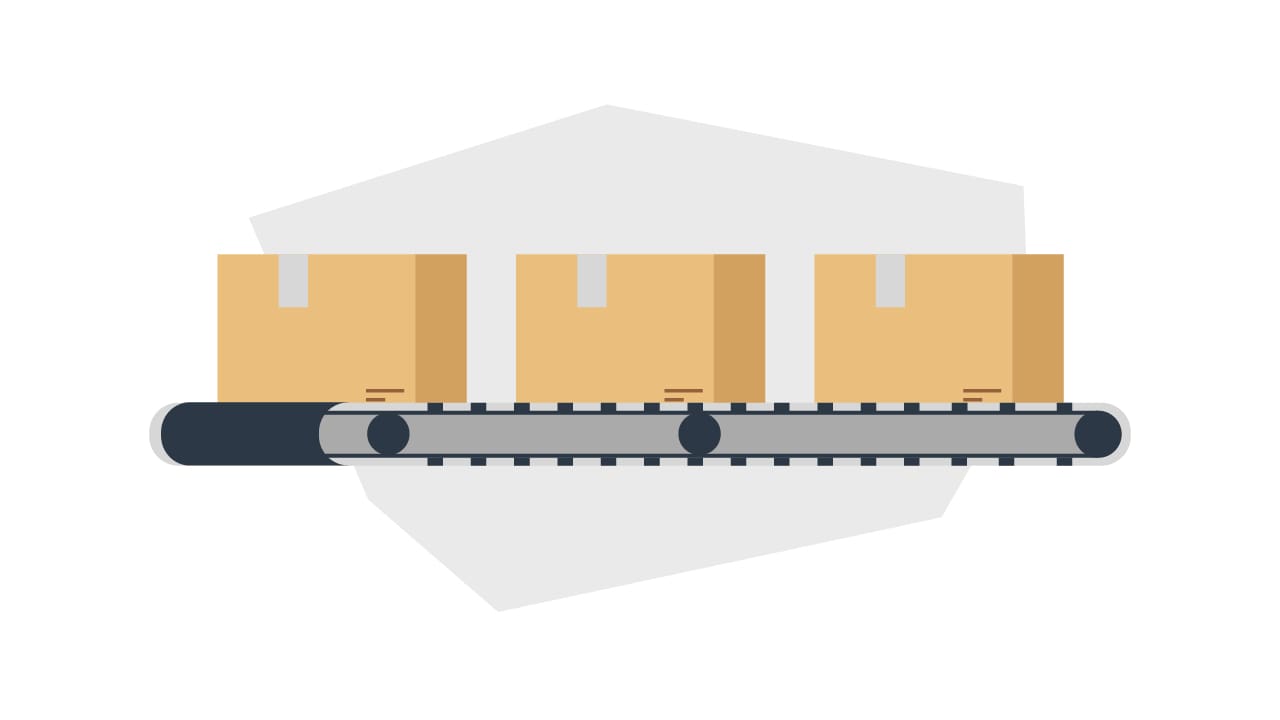
Order fulfillment is an integral part of every eCommerce business. Even if you nail buyer acquisition and have an A+ marketing system in place, you won’t retain customers with late deliveries or damaged goods.
Fulfillment has many moving parts, including receiving, processing, delivering, and more, all within a strict time frame — because a “five to seven business days” delivery won’t cut it anymore.
But not everyone has the time to pick, pack, and ship out orders themselves, especially in a growing business. Likewise, not everyone can afford to buy a warehouse, hire and train a fulfillment team, and get trucks on the road.
In this article, we’ll take a look at how outsourcing fulfillment to a third-party logistics provider (3PL) can help keep your business running smoothly, all while saving you time, money, and customers.
What happens when you have bad fulfillment processes?
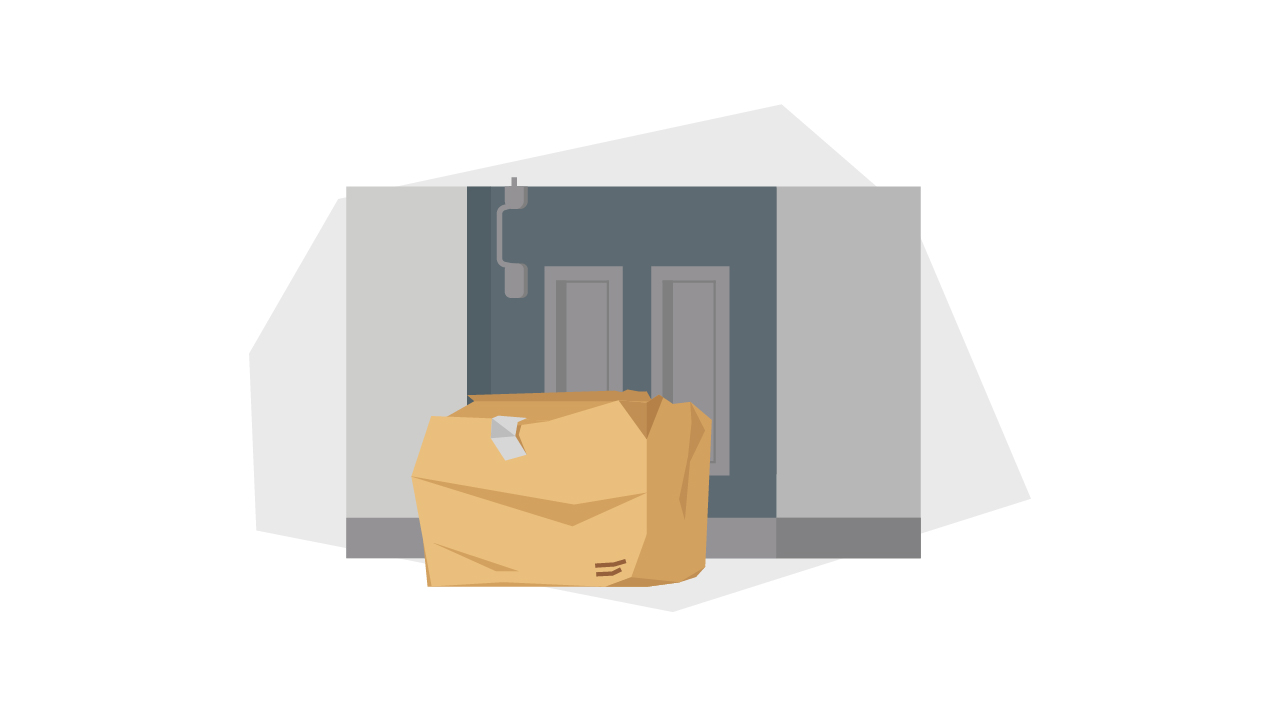
1) You lose customers
When you can’t deliver items on time, or in good condition, you lose out on repeat customers. 84% of consumers won’t shop with a brand again following a poor delivery experience. This affects your revenue, because retaining a customer is five times cheaper than acquiring a new one.
2) You lose money
A great buyer experience from discovery to delivery is better for your bottom line. Not only will you see higher retention and more referrals from happy customers, but you’ll also save money on all the returns, complaints, and penalties that come from poor fulfillment.
3) You lose time
If you deliver the wrong item, a damaged item, or a late item, consequences inevitably follow, specifically:
- Your customer support team has to dedicate their time and resources to handle the blowback.
- You need to spend time figuring out what went wrong and how to placate your customer.
- You have to spend time fixing the mistake, including back-and-forth emails and finding and shipping a replacement.
All that time doing damage control can be saved by avoiding fulfillment issues from the start.
4) You lose sales channels
Marketplaces can suspend sellers for being late too frequently — that’s how big an impact delivery has on the customer experience. Marketplaces like Amazon, Walmart.com, Wish and eBay all have delivery service-level agreements (SLAs) that state merchants must have items shipped and sent within a certain amount of time from when an order is placed.
If you don’t act quickly and set up an efficient fulfillment process, you risk losing out on multiple sales channels.
5) You lose your reputation
Did you know that a negative review can deter 86% of potential customers? A single negative review can drive away 22% of shoppers, and three deter more than half of would-be buyers.
If you miss your delivery date, send the wrong item, or deliver a damaged or improperly packed item, your reputation could suffer — and your bottom line.
How to ensure on-time delivery and proper item prep
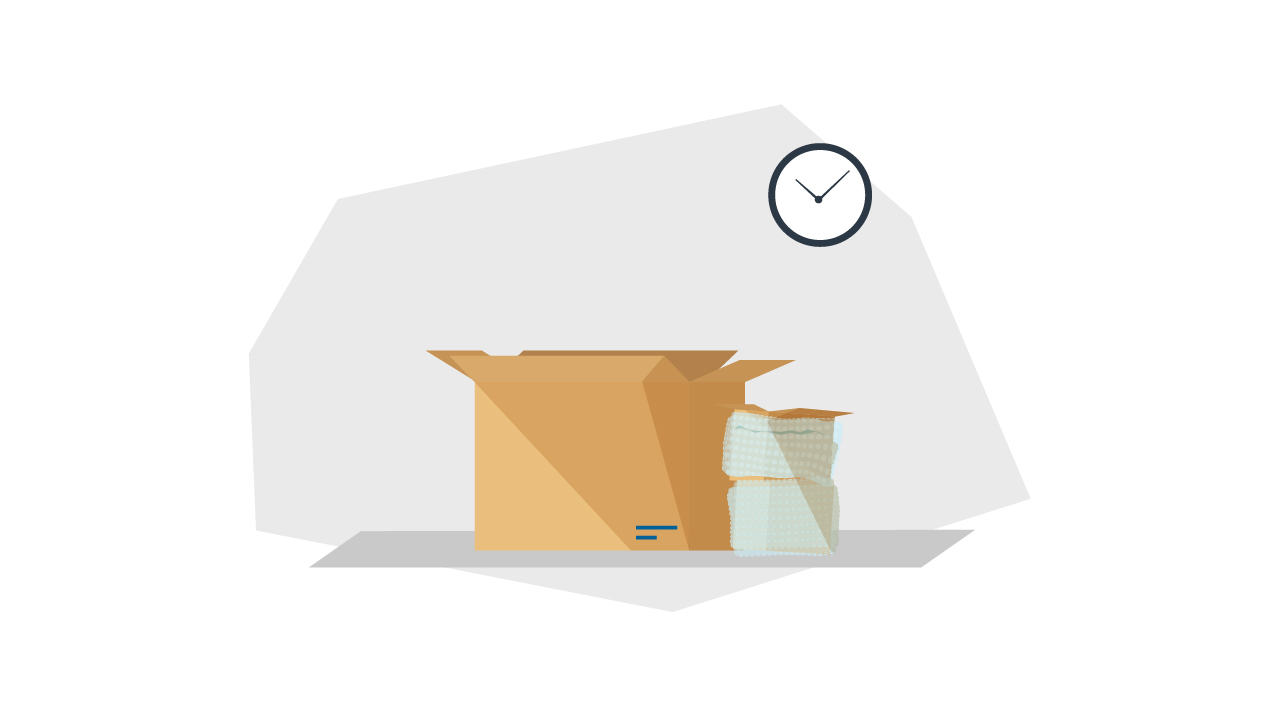
You can avoid negative reviews, a seller suspension, and losing out on money and customers by mastering your fulfillment process. This should include:
- Proper packaging so your items don’t get damaged.
- Correct prep work so channels like FBA accept items into their networks.
- Accurate labeling so items don’t get mixed up or confused.
- An efficient handling process so you hit marketplace on-time shipping SLAs and get items out the door as quickly as possible.
- Reliable on-time delivery to delight your customers.
If this sounds overwhelming, you can seek outside help. Let’s talk about how to outsource your entire fulfillment process to a third-party fulfillment provider.
What is third-party fulfillment?
Third-party fulfillment is when part or all of a business’ fulfillment processes are outsourced to a specialized fulfillment company. These processes include warehousing, inventory management, picking and packing orders, shipping orders, and managing returns.
Outsourcing these fulfillment processes allows merchants to focus on high-level tasks and leaves the experts to handle the logistics.
4 Benefits of using a third-party fulfillment service
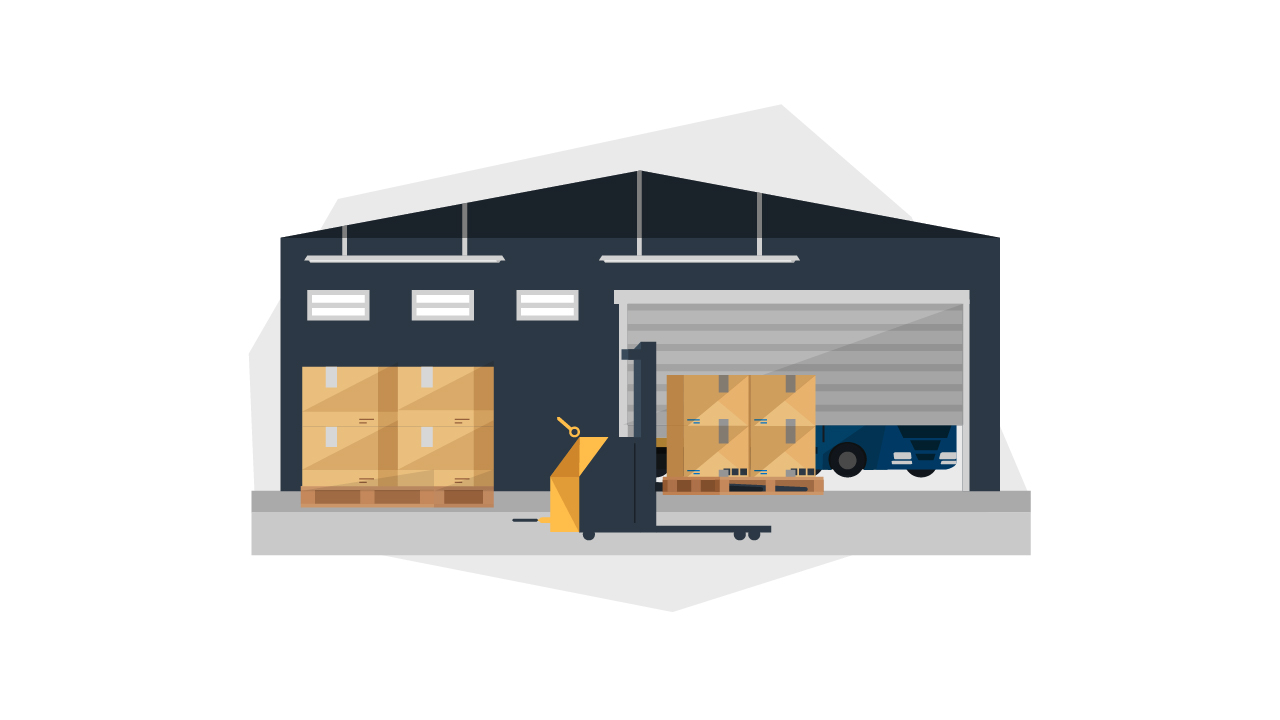
A third-party fulfillment service can stock products in a warehouse, pick and pack orders, and ship items right to your customer’s doorstep. They have their systems down, and can help you avoid human error and late deliveries.
Below are some key benefits of outsourcing to a third-party logistics provider.
1) Distributed warehouses and item locations
It’s important to have access to multiple warehouses and shipping locations across your market. This way, you can disperse your inventory to ensure items are close to your buyers, wherever they live. There are two key benefits from this:
- Items closer to buyers means less travel time, which translates to faster fulfillment, and thus happier customers.
- Items closer to their destination results in cheaper shipping costs, which earns more revenue for your business.
It’s not practical for a single merchant to buy warehouses across the US. When you work with a third-party fulfillment service, you can tap into their warehouse network and only pay for the storage space you need, at the locations you want.
2) Stay lean and save on logistics operating expenses
Having your own warehouses and fulfillment process is costly. You have to pay rent or buy property, hire entire teams to oversee and do the prep and shipping work, buy trucks to get items out, and purchase equipment to make sure it all runs quickly and efficiently.
You don’t need to take on those huge expenses. Here are a few ways you can save on operating expenses with a 3PL:
- Eliminate or reduce the cost of leasing a warehouse or storage unit.
- Reduce labor costs and taxes associated with order fulfillment.
- Lower packing material costs, since a fulfillment service may have a better price.
- Pack and ship quickly, allowing for more economical shipping services.
- Cut shipping costs because of volume and warehouse location.
3) Focus on growth, not boxes
Employing a third-party fulfillment service may also let you focus on other areas of your business. A third-party fulfillment provider saves you time, money, and energy, which you can instead devote to expanding your product line, growing sales, and lowering customer acquisition costs.
4) Utilize their strategic partnerships
Many 3PLs have existing partnerships with carriers, suppliers, manufacturers, and other key players in fulfillment. They enjoy perks like bulk discounts on boxes and special carrier rates, which they can pass down to you.
6 Key factors to look for in a third-party logistics provider

If you’re ready to take on a third-party logistics provider, here are some things to consider before making your decision.
1. Do they have the capacity you need?
Look at where your business is, where you want it to be, and how quickly you’re growing. You need a fulfillment partner who can handle your current and future capacity, with the ability to support your growth as you scale.
Are you adding new SKUs, expanding to new categories, and exploring new sales channels? Or do you plan to stay lean and operate your business at more or less the same capacity as it is now? Knowing your business direction can help you choose a 3PL that’s the right size for you.
2. Can they meet your shipping requirements?
Today’s most successful eCommerce companies aim to offer products that are “direct to everywhere.” That means selling everywhere your customers shop, meeting the shipping requirements of multiple sales channels, and being able to deliver nationwide.
Can a 3PL meet the delivery speeds your customers want? Do they deliver nationwide? Can they bundle your items when you have a special sale, or label items according to marketplace standards? Look at what you need in terms of shipping speed and locations, and select a 3PL partner that does it all.
3. What is their pricing structure?
There are many 3PLs that have complex pricing models and hidden fees, so you risk not knowing how much fulfillment actually costs until you get the final bill. This is risky and doesn’t allow you to predict revenue and budget appropriately.
To combat this, look for a 3PL with clear and transparent pricing, and ask about additional charges for things like work orders, inspection, receiving, and other commonly overlooked fees.
4. Where are their warehouses?
Having a distributed warehouse network helps you fulfill quickly, affordably, and on time. Ask where their warehouse locations are so you can gauge how well a 3PL can serve your customer base.
Identify the cities and states where the majority of your orders originate. Look for a partner who has locations in these areas, with additional locations to ensure nationwide coverage.
5. Do they have the expertise you need?
Each business, product, and SKU has different needs. Before working with a 3PL, you need to understand whether their expertise can accommodate your unique products.
For example, when we work with clients for carton forwarding, we match them with our largest warehouses, because they need space and storage.
However, when we work with enterprise brands for item-level FBA prep, we ensure that their warehouses understand exactly how to prep their catalog for FBA so that it’s conditioned correctly, everything is in place, and goes into FBA without a hitch.
6. How do they manage your data and information?
Data management is crucial because you need real-time insight into your inventory and fulfillment. Your fulfillment partner should provide a dashboard of reports you can monitor. Ideally, they’ll also have a dedicated system that combines data from your 3PL with your sales channels, manufacturers, and warehouses.
Wrapping up – What to consider when choosing a 3PL
Look for a partner that offers dedicated customer support, quick service, access to a proprietary portal, and a professional warehouse network.
As far as logistics are concerned, it’s best to work with a 3PL partner to meet your business goals. However, you have to factor in your business direction, shipping requirements, pricing, warehouse, as well as data and information when making your decision.
Everything You Need to Know About Prepping and Managing FBA Shipments
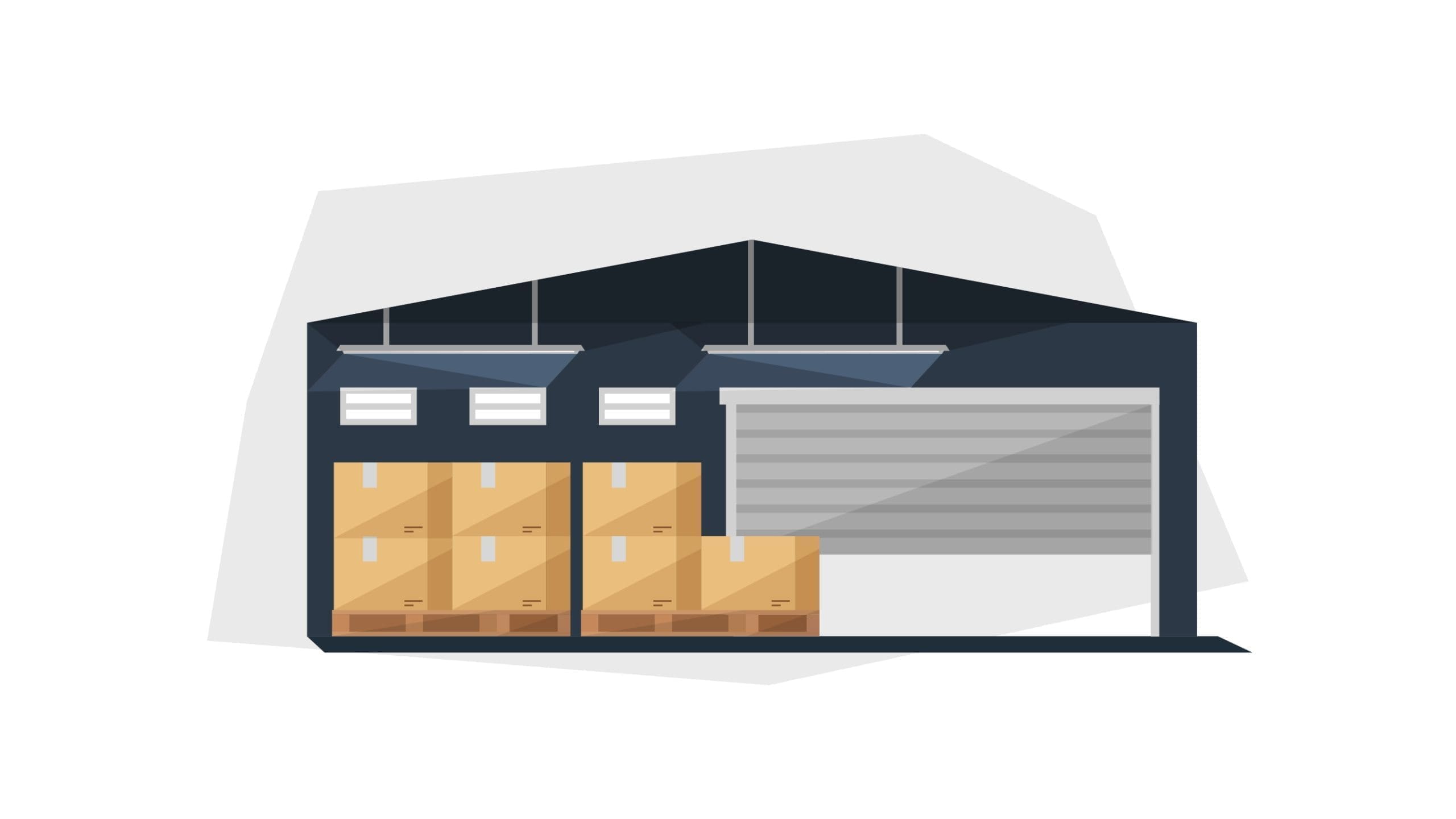
Amazon requires vendors to follow specific guidelines to sell their products on its platform. You need to ensure Amazon-compliant packaging, labels, and dunnage if you want your products to reach Amazon’s fulfillment centers.
One of the big challenges for eCommerce sellers is finding the best materials and methods to prep their items for different fulfillment networks. They need to deliver to a wide customer base across (ideally) multiple sales channels without breaking the bank or compromising their brand.
Finding warehouse space, processing orders and returns, and shipping to consumers is often time-consuming. Any setbacks can impede the business’s ability to scale up and meet their customers’ demands.
Fortunately, Amazon’s FBA service allows business owners to specialize in selling while Amazon handles everything else. We’ve laid out the ins and outs of FBA’s shipping guidelines, some tips to prep your items for FBA, how to manage your FBA shipments, and why you should consider using an FBA prep service.
What is Fulfillment by Amazon?
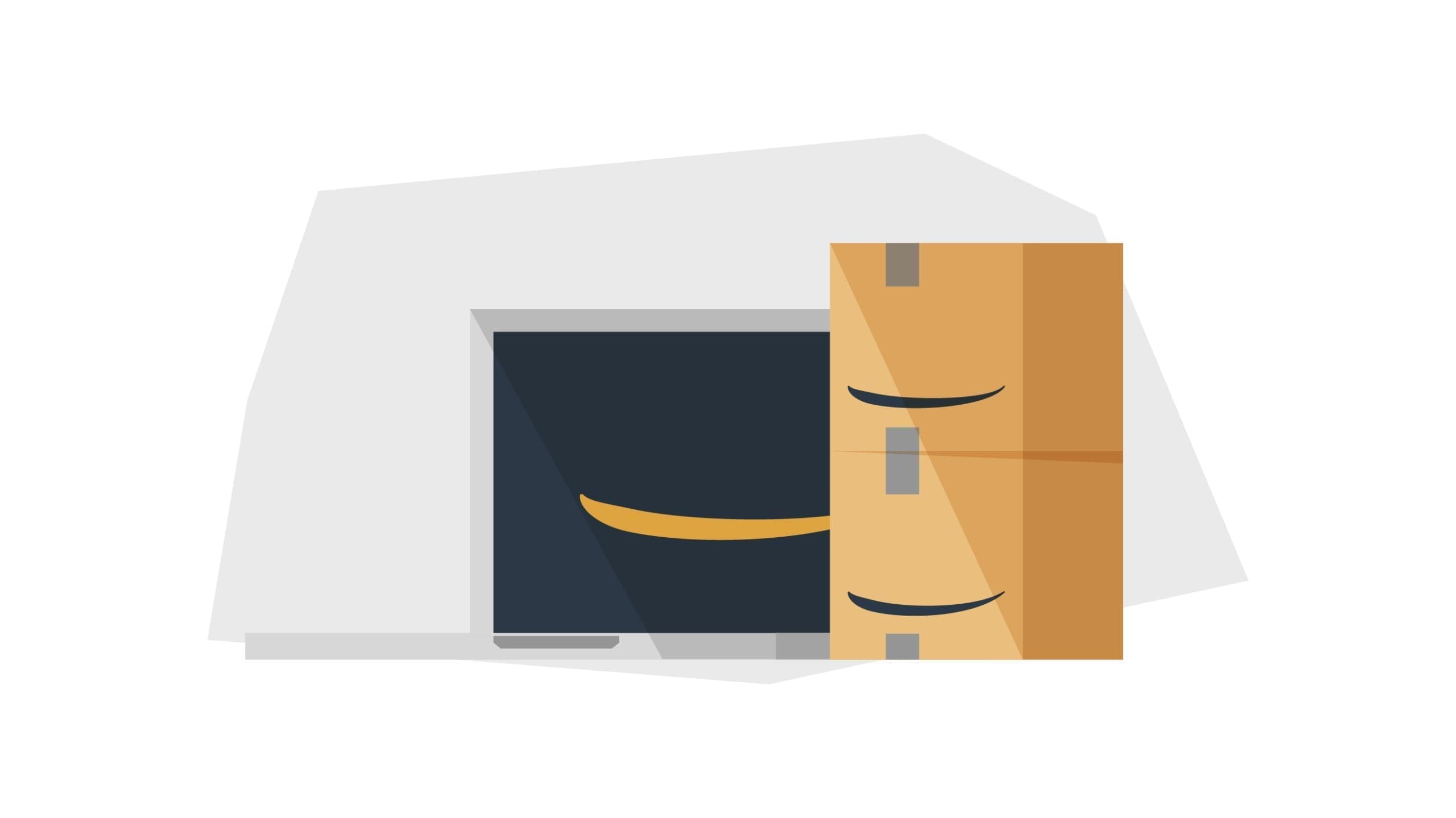
Business owners who sign up for Fulfillment by Amazon (FBA) can benefit from Amazon’s warehousing, shipping, and customer service setup. Sellers pack and ship their inventory to an Amazon fulfillment center. Amazon handles the pickup, packing, and transportation of merchandise, along with providing customer service.
Amazon FBA does not require a minimum on the amount of units sellers can ship through them. Sellers pay as they go, and are charged just for the orders that Amazon fulfills (as well as a fee for storage space). Leaving the order fulfillment and shipping processes to Amazon frees up a lot of time and resources for smaller businesses to focus on marketing and selling their products.
The FBA advantage
Selling on Amazon is a must for eCommerce merchants. Sellers who ship products through FBA enjoy the benefits of Amazon’s infrastructure. It makes products available for Prime shipping and broadens access to customers throughout the United States, Canada, and Mexico. Also, orders are managed through an easy-to-use online interface for clear communication.
How to package items for Amazon FBA
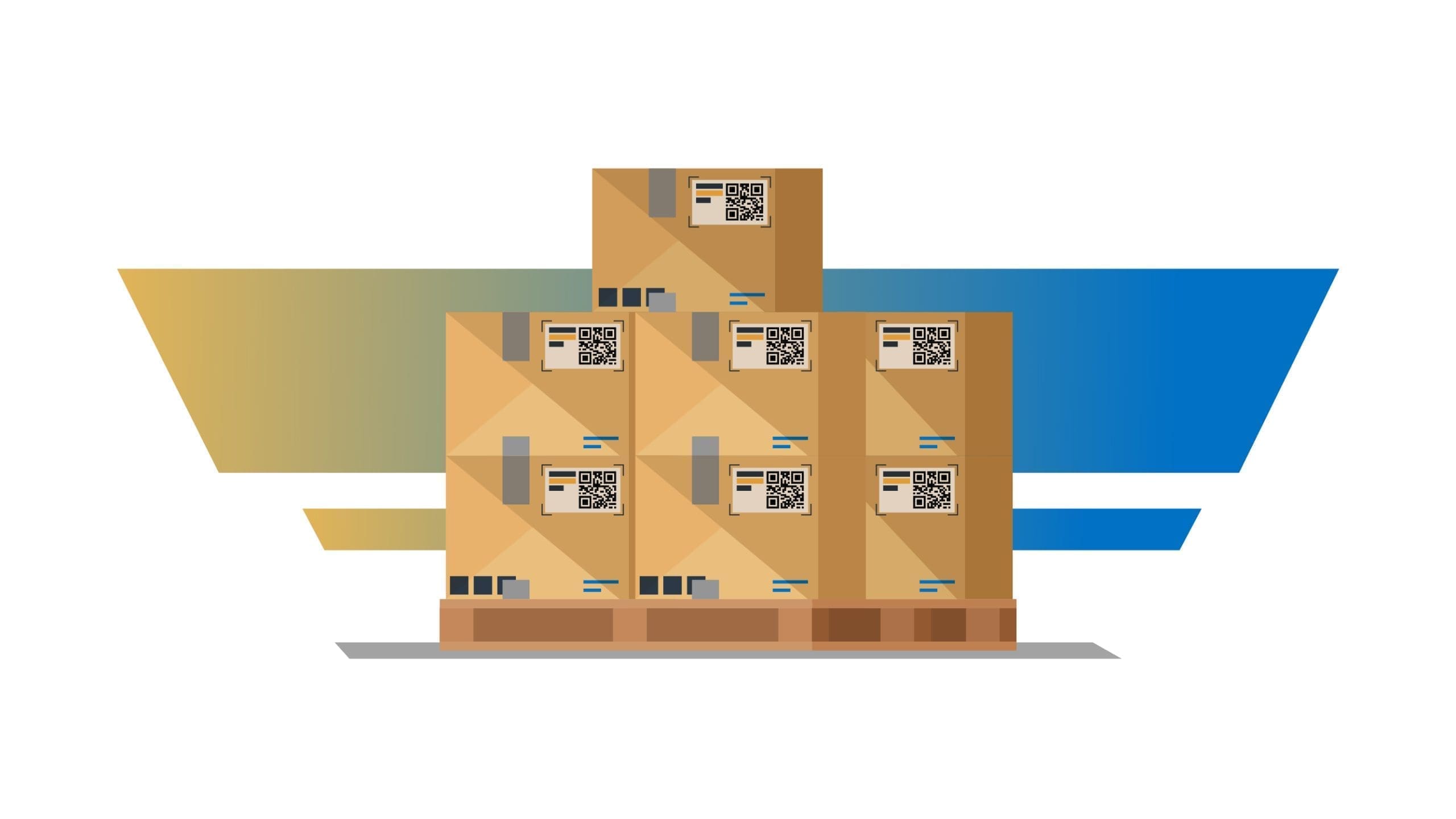
Doing business through FBA means vendors must meet Amazon’s packaging standards. Sellers should use the right shipping and labeling supplies before directing their products to fulfillment centers.
Here are some tips to help you avoid the most common Amazon FBA prep mistakes we see:
- Your labels must be clearly legible so warehouse workers can easily segregate products.
- Items sold as a set like books, shampoos, conditioners, and toys have to be marked explicitly on their packaging with a label that reads “Sold as Set” or “Do Not Separate.”
- Sellers must also label any perishable items with the expiration date on the packaging.
- When shipping glass items, like jars or bottles, we recommend adding a fragile label.
- When it comes time to box items, everything must be contained within one secure package. Boxes should be securely closed, with openings or lids firmly sealed — we recommend tuck top boxes for added security. Glue or tape can also be used to keep boxes closed.
- Boxes must not collapse when pressure is applied to any of the edges, so sellers might want to think about using heavy-duty corrugated boxes for safer shipments.
Your specific SKUs may need special packaging, unique dunnage, or something else not covered above. Learn more about how MyFBAPrep can take the prep work off your hands.
How to manage FBA shipments
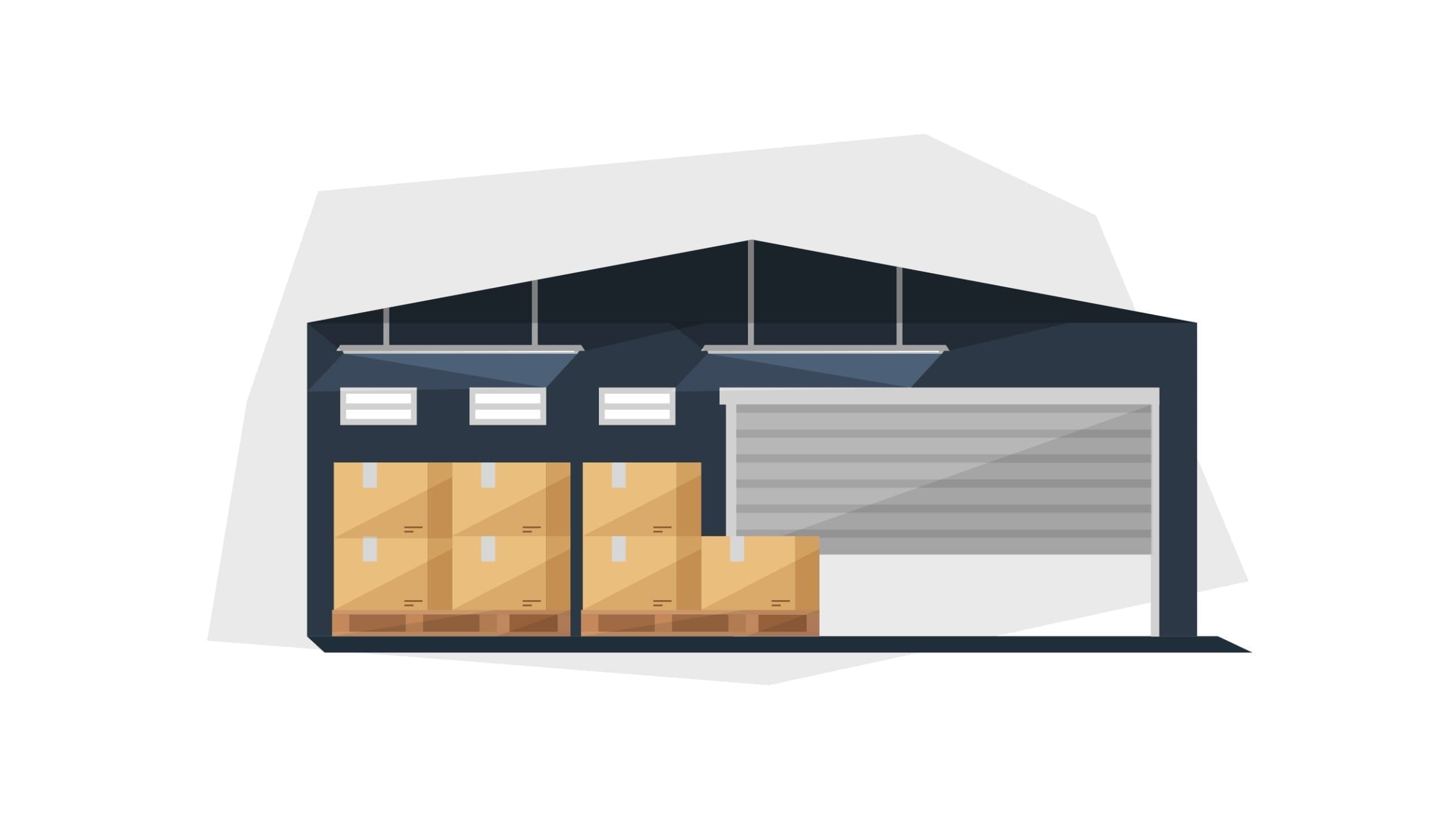
Once you’ve completed your prep work, it’s time to start on your FBA shipments. Luckily, this can be done from the comfort of your home.
The goal of creating and managing FBA shipments is to get your merchandise into Amazon warehouses across the country.
Did you know over 175 operating fulfillment centers are available in the US? This is how Amazon can process tens of thousands of merchandise and offer free two-day shipping to Prime customers.
It’s not difficult to create a new shipping plan; managing your inventory, labeling products correctly, prepping merchandise, and ensuring you meet all of Amazon’s guidelines can be. Working with a reliable prep service avoids time-consuming merch mix-ups and service fees, as well as potential risks to your account.
How long does it take FBA to process shipments?
Once an FBA shipment has been delivered to an FBA center, it normally takes 2 – 6 days to process. If within 6 days your shipment is not showing as checked-in or gone into receiving status, check with your carrier to ensure it was delivered. However, there are a number of factors that can also extend this time frame such as seasonal delays, errors in the packaging process, missing shipments, and staffing issues within the fulfillment center.
How FBA prep services can help your eCommerce business

An effective business strategy needs to cover all aspects of online selling, from marketing to shipping. FBA gives Amazon sellers an efficient way to fulfill items, but what about everything else? Here’s where FBA prep services come to the rescue.
How FBA prep services work
Most individuals who sell online would rather direct their energy toward managing the business than assembling boxes. With an Amazon FBA prep service, you can outsource storage, preparation, labeling, and any other tasks to ensure your items comply with the FBA network requirements.
Business owner responsibilities
Utilizing FBA services can take a heavy burden off your shoulders, but there are a few things you’ll still be responsible for. Keep these three important factors in mind as you consider third-party help.
- Know your product – You’ll need to keep a close eye on your SKUs to identify which ones are best sellers, and which run the risk of becoming stale stock. Don’t waste money on warehousing and prepping too many items that don’t sell as quickly.
- Stay in stock – While it’s a good problem to have, selling out your inventory may cause marketplace suspensions and loss of sales. Your rankings may fall, and your customers will buy from your competitors instead.
- Perfect your customer acquisition – eCommerce sales rely on more than strict marketing; you need to optimize your listings, refine your funnels, and reach your ideal customers on the channels they prefer. Great items will sell, but only if people know about them.
What you can outsource to an FBA prep team
Effectively outsourcing your FBA prep allows you to scale your online business to levels you may not have thought possible. Using Amazon FBA and a prep service to manage FBA shipments has a number of advantages:
- A hassle-free way to run an eCommerce business – Once your items are successfully accepted into the Amazon network, FBA will handle all the fulfillment work for you. Do what you love most — running your business — without worrying about processing and shipping orders.
- Take advantage of the brand – It’s no secret Amazon is the top dog in online buying, and customers are continuing that trend. As of 2021, there are more than 200 million Amazon Prime members worldwide, according to Statista. These consumers are willing to pay for extra access to Amazon services, because they know items will reach them quickly and safely.
- Offer customers fast shipping – Having the product at your doorstep in two days with one click is hard to beat, which is exactly what the FBA network provides on your behalf.
- Outsource customer service – Being a successful business owner is also about keeping your customers happy, and FBA services have this covered. If a buyer is unsatisfied with their item, Amazon provides 24/7 customer service, saving you valuable time.
Wrapping up how to manage your FBA shipments
Going through FBA enables companies of any size to take advantage of Amazon’s vast fulfillment network to get items to customers. While an FBA prep service adds an expense, it saves you in the long run through time and operational costs. Merchants also won’t have to worry about processing refunds, breaking down boxes, or sourcing packing peanuts.
Using FBA and FBA prep services to manage your shipments can help you focus on growing your business while your operations run seamlessly in the background.




